The Kangaroo Island Wilderness Trail is on Kaurna, Narrunga, Ngarrindjeri and Ramindjeri Country. I acknowledge the Traditional Custodians and their deep and ongoing connection to Country. I pay my respects to their Elders past and present.
I’ve been semi-eagerly (is that a word?) awaiting the re-opening of the coastal Kangaroo Island Wilderness Trail in Flinders Chase National Park since horrific bushfires burnt almost the entire national park (97%!), including the trail, to a crisp in January 2020.
It takes a while for fire recovery to do its magic and for a trail and its facilities to be rebuilt but in December 2023, the trail finally reopened to individual hikers.
And so on a spur of the moment, we decided to book a short trip to Kangaroo Island and hike the 66km Kangaroo Island Wilderness Trail in March.

I desperately needed a break from work and a good dose of nature, and since the KIWT fits very neatly into a week, it ended up being a great choice for a week’s getaway.
KANGAROO ISLAND WILDERNESS TRAIL: THE BASICS
The Kangaroo Island Wilderness Trail (KIWT) is not the world’s most amazing hiking trail. It’s not even Australia’s most incredible hiking trail (try the Larapinta for that) but the KIWT is a very enjoyable, scenic coastal track.
Being a southern coastal hike, we kept comparing the Kangaroo Island Wilderness Trail to the Three Capes Track (TCT) in Tassie, even though they’re both quite different trails (and with vastly different amenities and associated price tags).
From a scenic point of view, I enjoyed the KIWT more than the Three Capes Track while the husband preferred the TCT for its dramatic cliffs.
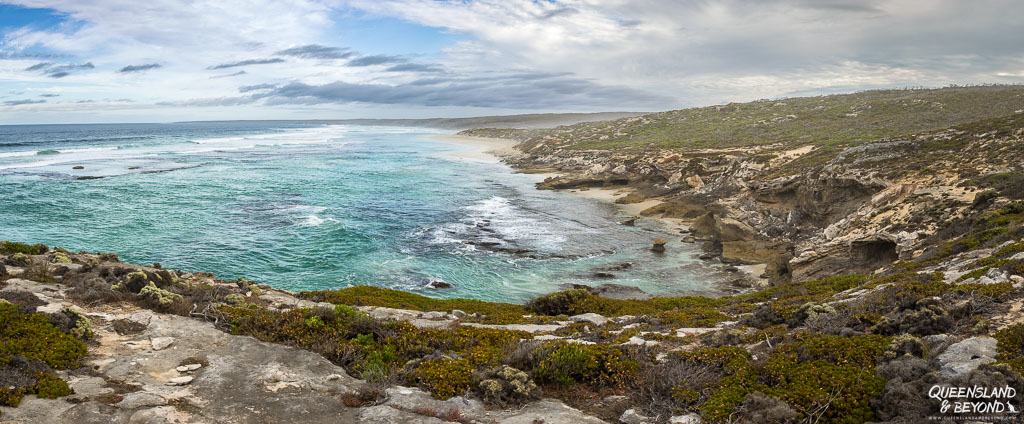
THE KANGAROO WILDERNESS TRAIL AT A GLANCE
DISTANCE: 66KM
TIME: 4-5 days
HIGHEST ELEVATION: 150m
GRADE: 4 (moderate)
START POINT: Flinders Chase Visitor Centre
END POINT: Kelly Hill Caves
PERMIT: National Parks & Wildlife Service SA
FEES: $193 pp
PERSONAL ENJOYMENT RATING: 3/5
THE BASICS IN SLIGHTLY MORE DETAIL
There aren’t too many options when it comes to hiking the Kangaroo Island Wilderness Trail.
In March 2024, the trail fee was AU$193 each, and included campsite fees (4 nights), a large waterproof map (provided at induction), and admission to Kelly Hill Caves. You’ll need to book your hike online to secure a permit.
The 60-odd kilometre trail can only be hiked in one direction – west to east – and usually takes about five days.
Your last day is either very short (about 7.6km), or it could quite feasibly be squished into the previous day if you don’t mind a longer day as your last day, thus making the KIWT a 4-day hike. You’ll need a car shuffle or arrange a private shuttle back to the start though.
12 individual hikers are allowed on the trail each day, and you can only stay at each campsite for one night. There were eight other hikers when we hiked the trail, which was fairly full given that other people were completely on their own (based on what I gleaned from logbook entries).
You may also meet a few guided groups, most of which will not actually stay on the trail but get bussed in and out every day. We met about three different groups over the five days but none stayed in the campgrounds so it still felt fairly quiet and relaxing.
You start at the (temporary) Flinders Chase Visitor Centre and finish at Kelly Hill Caves some 60km later. There are a few side trips along the way that you don’t want to miss and which will add a few more kilometres to the overall tally.
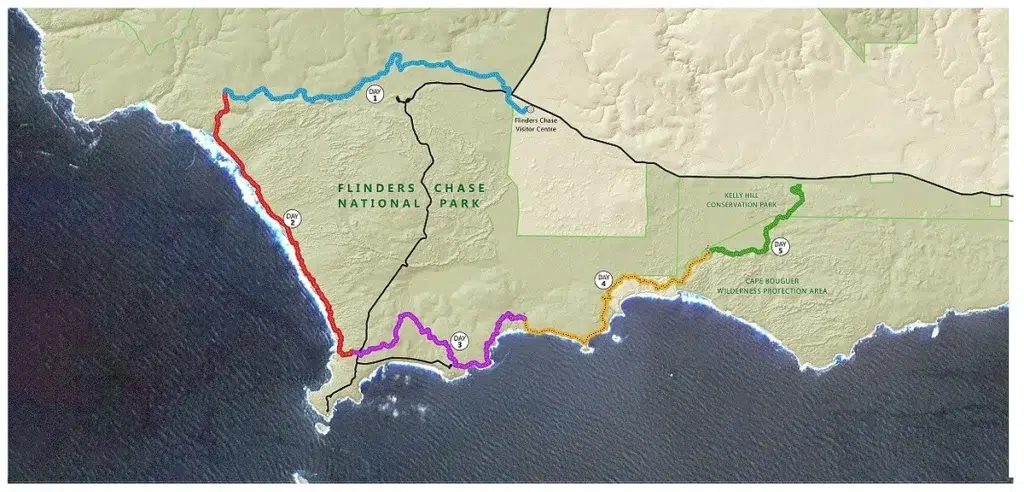
We took five days as we hadn’t gone on a hike since the previous September and we didn’t want to rush. We also wanted to visit Kelly Hill Caves on the last day since admission is free for KIWT hikers.
There’s not a lot of mobile coverage along the trail, your best bets are the higher points along the trail. I didn’t mind since I was there to destress and enjoy just being outdoors. We didn’t even take our GPS on this hike because it is so well-marked (we do always carry a compass just in case).
We never felt completely remote on this hike (like you might on the Larapinta) as there are so many points where you intersect with roads, accommodation or day walkers / guided groups. It felt like help was more or less readily available should we need it.
ELEVATION
Being a coastal hike on a relatively flat island, the elevation is nothing too serious, just a bit of up and down. If you’re reasonably fit, you won’t even notice that you’re going up and down here and there.
What’s exhausting on this hike is the constant switch between hiking on sand and rock stepping, especially on Day 2 and 3.
TIDES
Apart from the weather, there’s only one other thing you may need to think about when planning your hike: the tides. But they’re only relevant for Day 2 when you need to hike along the beach at low tide. Alternatively, you can take the high-tide track but that is both longer and more arduous.
Day 2 was both the hardest, longest and most scenic as far as I was concerned. But all things considered, this is a moderate to easy hike if you’re generally fit (I am not that fit).
GETTING TO / FROM THE KANGAROO ISLAND WILDERNESS TRAIL
Organisationally, the hardest part about the KIWT is getting to it:
- because it’s on an island and you’ll either have to take the rather expensive SeaLink ferry across to Penneshaw or fly directly to Kingscote, and
- transport options on the island are (still) very limited. None of the bus operators from before the 2020 fires seem to be offering their shuttle bus services for now.
Coming from interstate without a car, our main concerns were how to get to the start of the trail, how to get back to wherever we needed to go at the end, and how to move around the island.
If you decide to rent a car, your next snag would be finding a rental car company that allows you to take a rental car on the ferry to Kangaroo Island. You could hire a car once on the island but they are prohibitively expensive (especially when it’s going to sit in a car park for five days)!
SHUTTLE SERVICE BETWEEN TRAIL ENDS
Information on shuttle options between the start and end of the trail is somewhat limited online. But in fact, the national park offers a shuttle service.
If you have your own transport parked at the start, national park staff will pick you up at Kelly Hill Caves and take you back to Flinders Chase Visitor Centre at the end of your hike. You can organise this when you check in for your hike at the visitor centre.
HERE’S WHAT WE ENDED UP DOING:

- Flew directly from the Sunshine Coast to Adelaide (luckily, Jetstar is currently flying this route a few times a week) on a Saturday morning
- Rented a car in Adelaide from East Coast Car Rentals since they were the only affordable rental company that allowed us to take a rental car onto Kangaroo Island
- Did a super quick grocery shopping trip along the way (since we would literally have no time on the island to do any shopping)
- Drove to Cape Jervis (about 2 hours) to catch the 7pm ferry the same day; luckily, we got there early and managed to change our booking to the 6pm ferry giving us an extra hour on the other side
- Once across the strait (about 45 minutes), drove all the way to the western part of Kangaroo Island to arrive around 8:30pm at the Discovery Park Caravan & Holiday Park. For the next two nights, we stayed in a lovely, albeit somewhat expensive, little cabin.
- Checked in for our hike at the Flinders Chase Visitor Centre (which is nothing more than a car park with a demountable office/visitor window at this stage) on Sunday, booked our tour of the Kelly Hill Caves and confirmed our transfer back to the Flinders Chase Visitor Centre car park; spent the rest of the day exploring areas of the national park we wouldn’t see on the hike
- Drove to the Flinders Chase Visitor Centre on Monday morning, parked the rental car in the designated car park and started hiking around 7:50am
- Five days later, national park staff picked up the husband from Kelly Hill Caves at 11:30am so he could get our car; he then drove back to Kelly Hill Caves for us to join the 1pm tour; stayed the night at the Discovery Park again
- On Saturday, visited the seal colony at Seal Bay and then made our way back across Kangaroo Island and onto Adelaide; stayed at the airport hotel and flew back home on Sunday morning
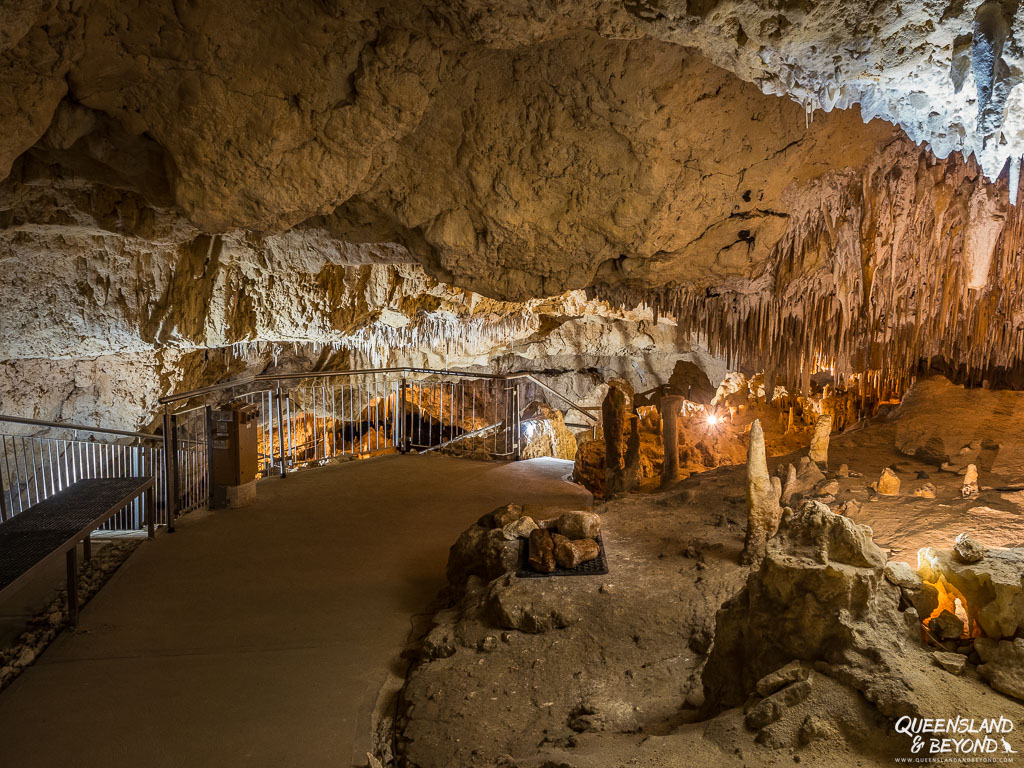
A bit of a whirlwind trip but a really fabulous one at that!
HIKING THE KANGAROO ISLAND WILDERNESS TRAIL: ITINERARY AND TRIP REPORT
Fire recovery of the Flinders Chase National Park area is now in its fourth year, and the recovery is nothing short of incredible. The national park was green, lush and abundant in flowers, shrubs and with a surprising regrowth of trees.
We just loved seeing the national park in such beautiful, vibrant splendour at this point in its recovery.

Despite the lack of rain, we both thought it was the perfect time to do this hike and see how magnificently the plants are regenerating after the devastating fires.
There are still signs of charred tree trunks, fallen logs and dead tree tops but in a few years, these will all be gone, and green (or maybe brown from drought) will have taken over.

When planning, keep in mind that the KIWT is a very exposed track, and apart from the first and last days, there is very little sun (or rain/wind) protection.
CAMPGROUND FACILITIES
A quick word on the campground facilities before I get into more details about the trail.
The campgrounds cater both to individual hikers and guided group hikers. Only 12 each are allowed to stay a night, and there are separate campsite sections for each group. Shelters and toilets are shared by all.

None of the campgrounds are in scenic locations. They have been chosen for what seems like easy access for servicing and perhaps to keep you out of the wind. You don’t do the KIWT for its grand views from the campsites, that’s for sure.
CAMPSITES
The facilities, however, are absolutely fabulous except for … the gravel-based tent pads. Whoever thought that a rough gravel base suitable for caravans or camper trailers is suitable for hiking tents should be handing out cash to every hiker so we can all buy new tents.

Even with our footprint – and having camped in rather rocky sites on the Larapinta last year – we felt very iffy about camping on these pads. Without a footprint, we would have been very unhappy hikers I suspect.
Fortunately, there are also some tent platforms, which make for a much nicer surface, but the problem is that there aren’t enough, or they’re not in the ‘self-guided’ (= individual) hikers section but in the ‘tour group’ section.
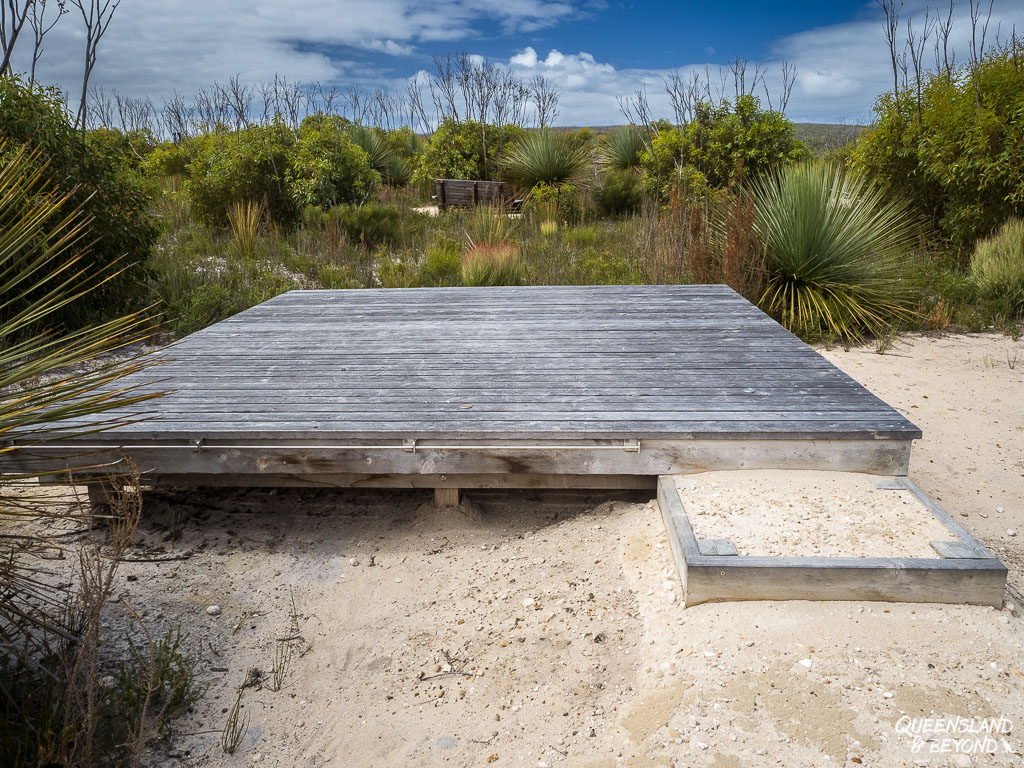
Since no guided tours were actually staying in the campgrounds during our hike, we all helped ourselves to whatever tent platforms were available. But one fellow hiker still got a hole in her tent since there were not enough tent platforms for everyone to camp on them every night. So, yay.
KITCHEN SHELTERS
Other than the tent pads, the facilities on the KIWT truly are fantastic.
The kitchen shelters are especially great.
Enclosed on three sides (plus roof), they all have bench space, cupboards for food storage, a sink/tap with apparently treated water (but with signs to still boil/treat it – huh?), hooks for hanging up gear, tables and benches, a fireplace (winter only), and solar-powered lights.
Pretty great.

From what I’ve seen, they’ve pretty much rebuilt the original kitchen shelters and toilet blocks but have added wonderful things like a recess for cooking food out of the wind, food storage cupboards and hooks in the shelters.
We used the cupboards for storing our food every day as neither of us fancied getting our tent ripped apart by a hungry goanna. This also saved us carrying our food back and forth from our campsite to the shelter every morning. Since we tend to leave early and didn’t want to disturb the other hikers, we packed up all our gear at the kitchen shelter every morning. Plus we had lights and plenty of bench space to organise ourselves.
In each campground, the distance between the kitchen shelter and the campsites is at least 50m if not more. Someone really thought about the impact noise from the shelter might have on hikers wanting to sleep!
TOILETS
The (drop) toilets were very clean and tidy with plenty of toilet paper. Even sanitary bins are provided (never seen that before).
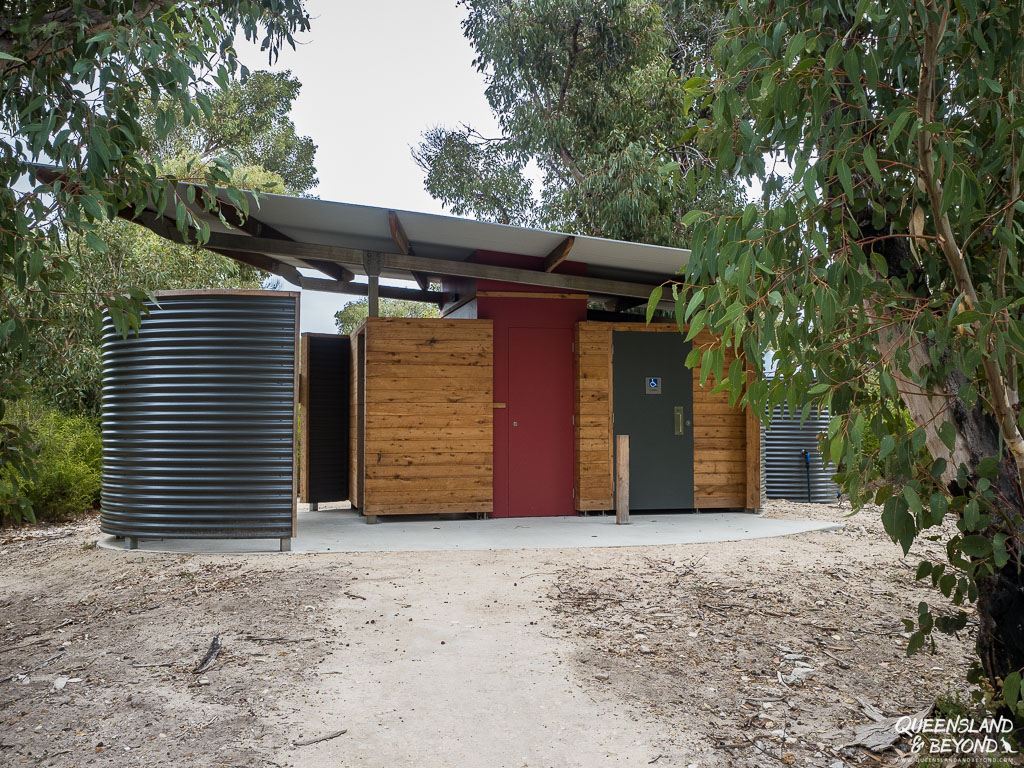
Since we’re talking toilets, there are no toilets along the way, only at the campsites (and at Remarkable Rocks if you’re doing that side trip). Cover for bush toileting is also very limited (as in mostly non-existent), especially on Day 2, 3 and 4.
DAY 1: ROCKY RIVER SECTION | 12.2KM (WITH SIDE TRIP: ~16KM)
Day 1 takes you from the (temporary) Flinders Chase Visitor Centre to Cup Gum Campground, currently some 12km of walking.
Once the new visitor centre is finished, the hike is expected to be 5km longer, making Day 1 the longest section (in terms of kilometres) on the trail.
Day 1 is probably not the most exciting day on the KIWT.
That said, we actually really enjoyed it.
Our day started with fog, which seemed really odd for mid-March but there it was. We could barely see the road as we drove the few kilometres from our accommodation to the national park.
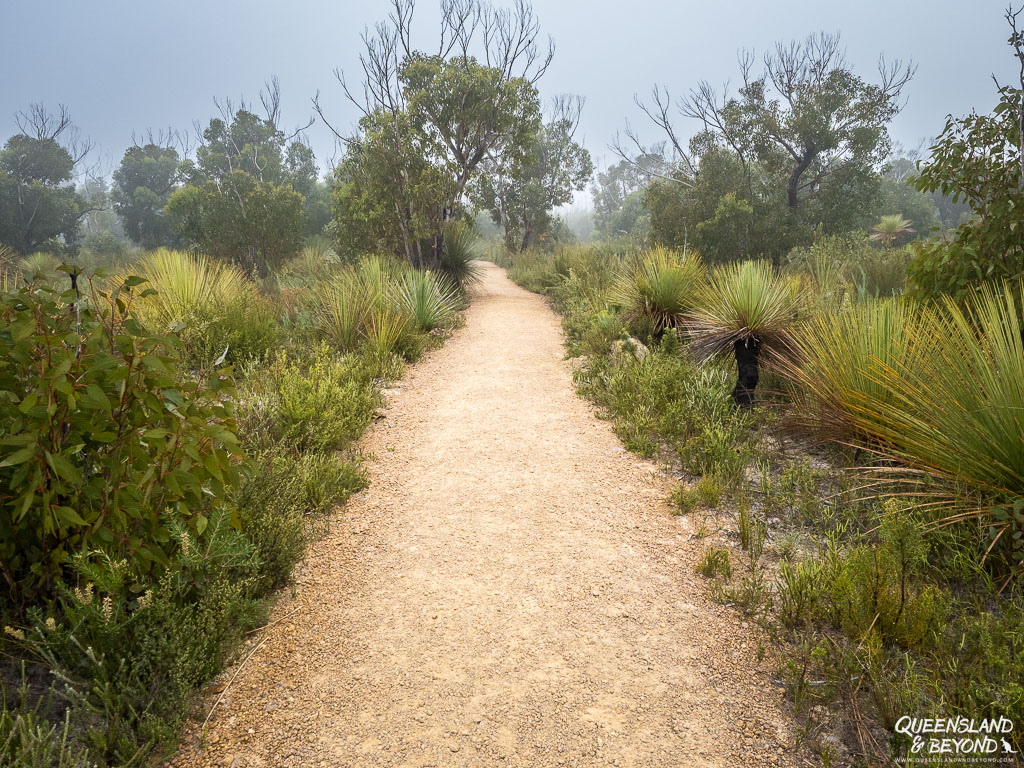
Fortunately the fog lifted a couple of hours later but it remained overcast for pretty much the whole day. This suited me fine as I find it makes easing into a hike more comfortable.
My pack always seems to not sit right, I often don’t sleep well the night before (mostly nerves), and I’m still carrying all our food (minus dinners, that’s the husband’s job). So for the first few kilometres, I’m often quite uncomfortable and a bit nervy.
Hence I’m always grateful when the weather plays along by being cool and not too sunny.
The trail currently starts across the road from the visitor centre and follows the walking track to the platypus waterholes. Everything in the national park is still in a bit of flux as facilities and tracks are being rebuilt.
Sadly, there’s no lovely sign (yet) marking the start of the trail, only a makeshift marker that’s really a bit sad given how amazing the facilities are on the rest of the trail.
At the moment, you feel like you just walk into some random undergrowth to start your adventure.
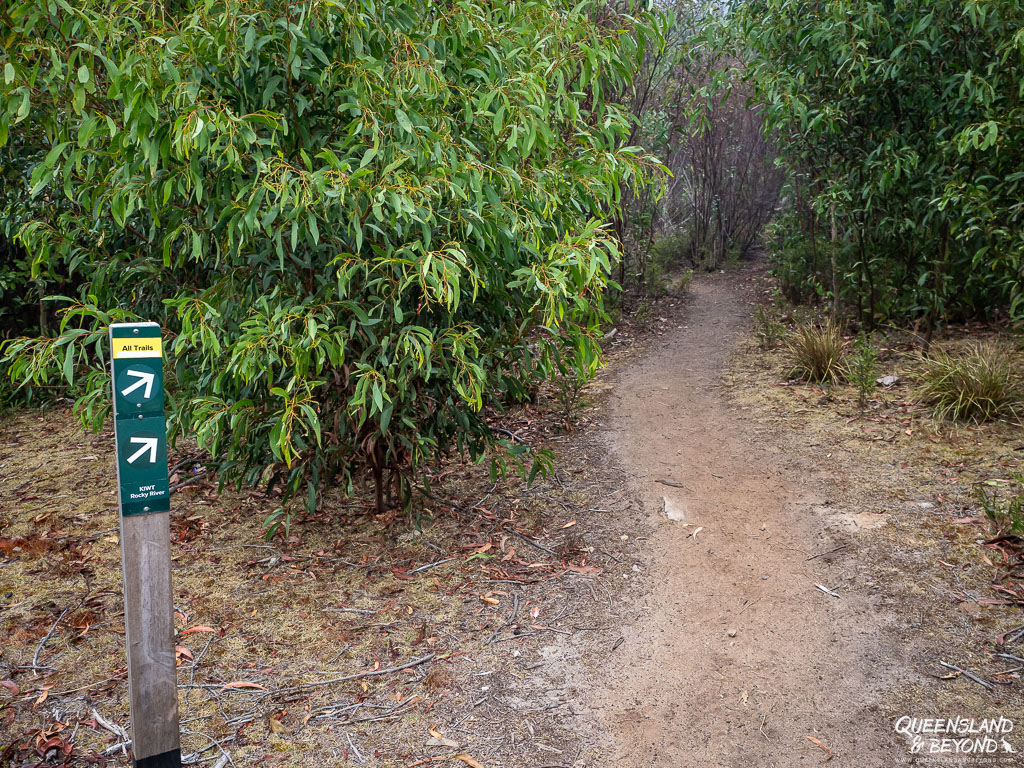
Signage along the trail is a bit confusing initially as markers have clearly been placed in anticipation of the (to-be-longer) trail starting from the new visitor centre.
Our first kilometre marker started at 7km (km markers increase as you walk) when we clearly had only walked two or so kilometres. Once I saw the 8 and 9km markers, I worked out that the first marker was obviously placed in an overly excited attempt to get ready for the nowhere-near-ready longer start of the trail.
In camp that night, it turned out we weren’t the only ones confused by the strange km-markers and a couple of arrows pointing away from the trail rather than to. Use common sense and you’ll be fine.
The start of the KIWT is part of an interpretative walk to the platypus waterholes and you can find some rather cool megafauna cutouts along the track.

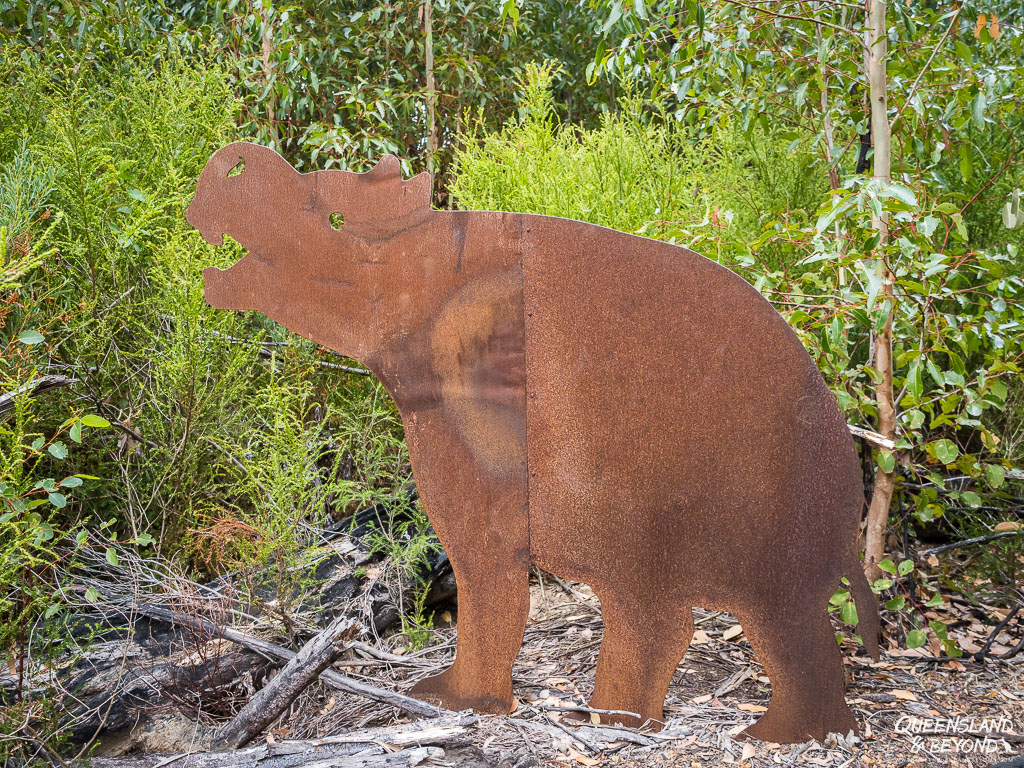
From the platypus waterholes (no, we didn’t see any platypus but also didn’t hang around for ages to wait for them), the trail tracks through different types of woodland and vegetation for much of the day.
A nice half-way marker is Pardalote Lookout from where you drop into Rocky River Gorge. You then walk through what, for now, feels like a wild botanic garden. In March, the greenery was so lush, fluffy and covered with wildflowers, blossoms and new growth, we just marvelled.
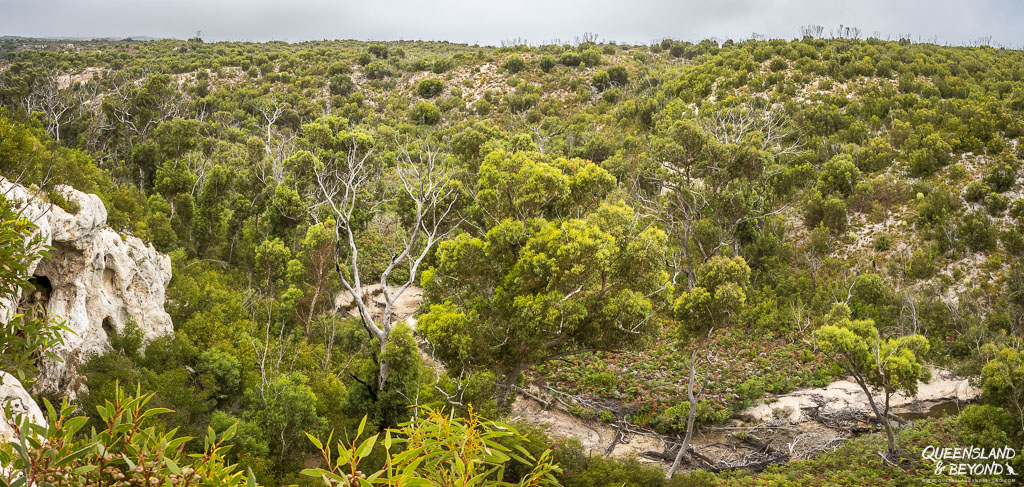
You might get a chance to see some platypus at the Cascades. This was a good spot for us to have lunch and meet some day hikers, but surprisingly not for a platypus encounter in the middle of the day.

The rest of the trail is more woodland before ending rather abruptly at Cup Gum campsite.
CUP GUM CAMPGROUND
The first campground was possibly my least favourite but only because the campsites are fairly squished together. There’s an equal number of tent pads and platforms here so everyone ended up on a platform (with people sharing tents).
Still being in the forested part of the trail, there’s plenty of sun protection here but you can also bask in the sun on various benches and wooden sun loungers.

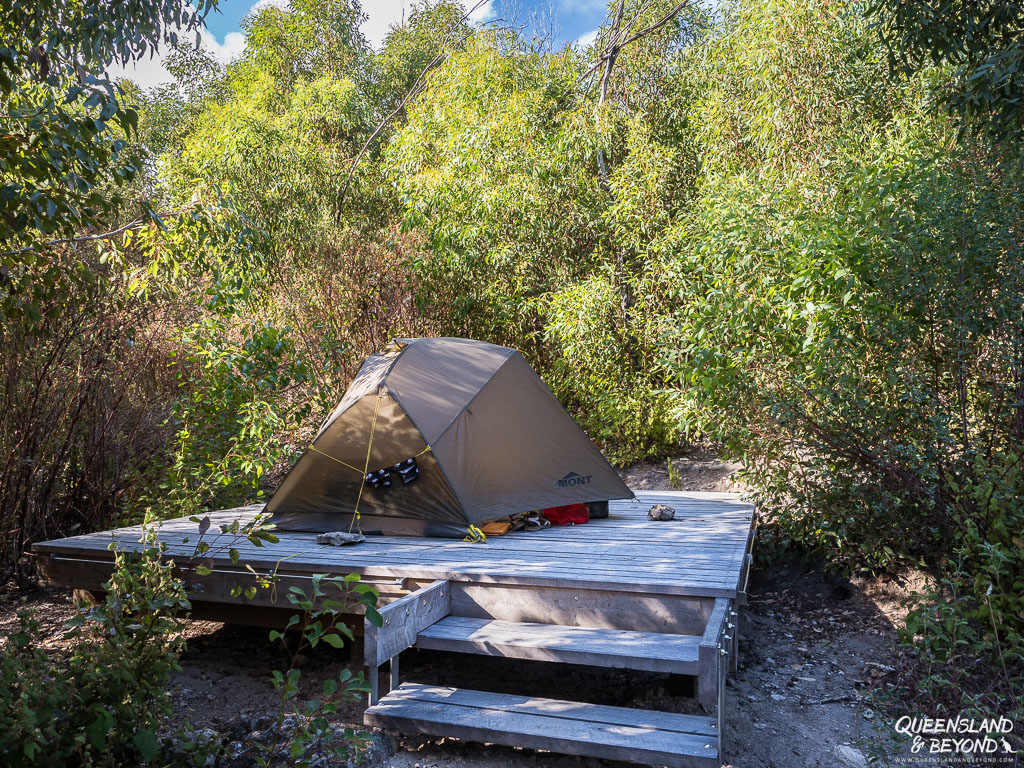
Honestly, the facilities are nuts.
Like with the campgrounds to come, the shelter and toilet are a fair way away from the campsites. You can’t even see the light in the shelter when you’re in the campsite area.
SIDE TRIP: SNAKE LAGOON | 4KM RETURN
If you’ve got the energy, it’s well worth making the effort to trek to Snake Lagoon and the dry mouth of Rocky River. You follow part of this track the next morning but it’s nice to have time to explore the beach in the afternoon.
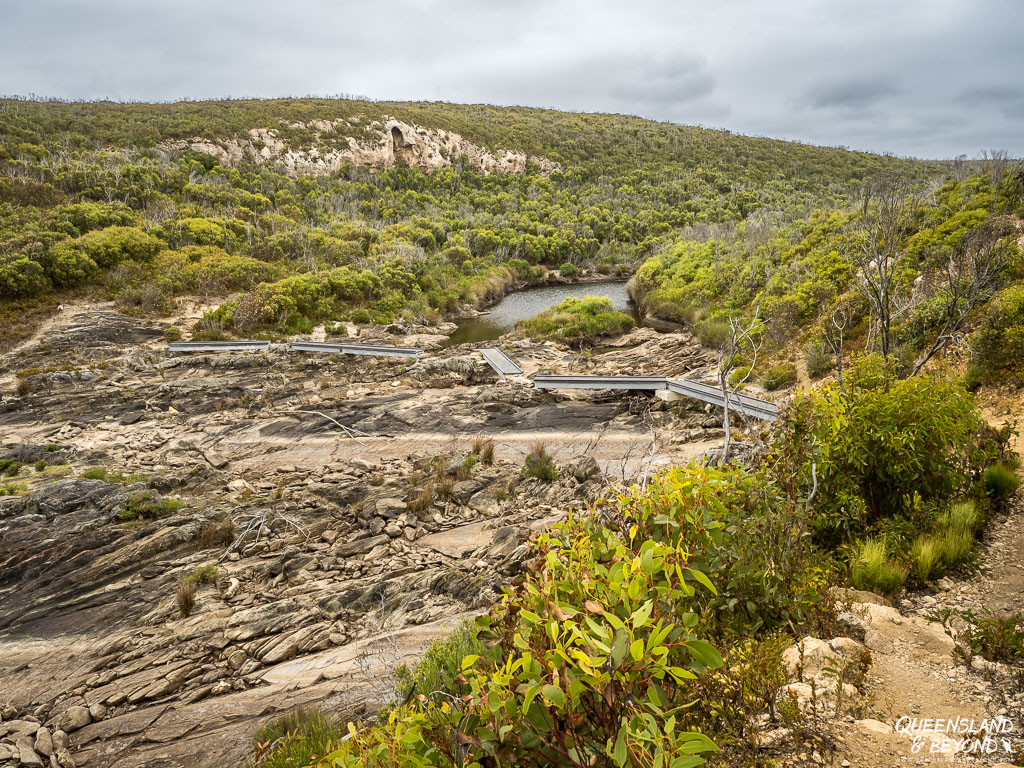
The ocean is wild here but the beach still looked fairly pristine with its soft white sand framed by limestone cliffs on both sides.
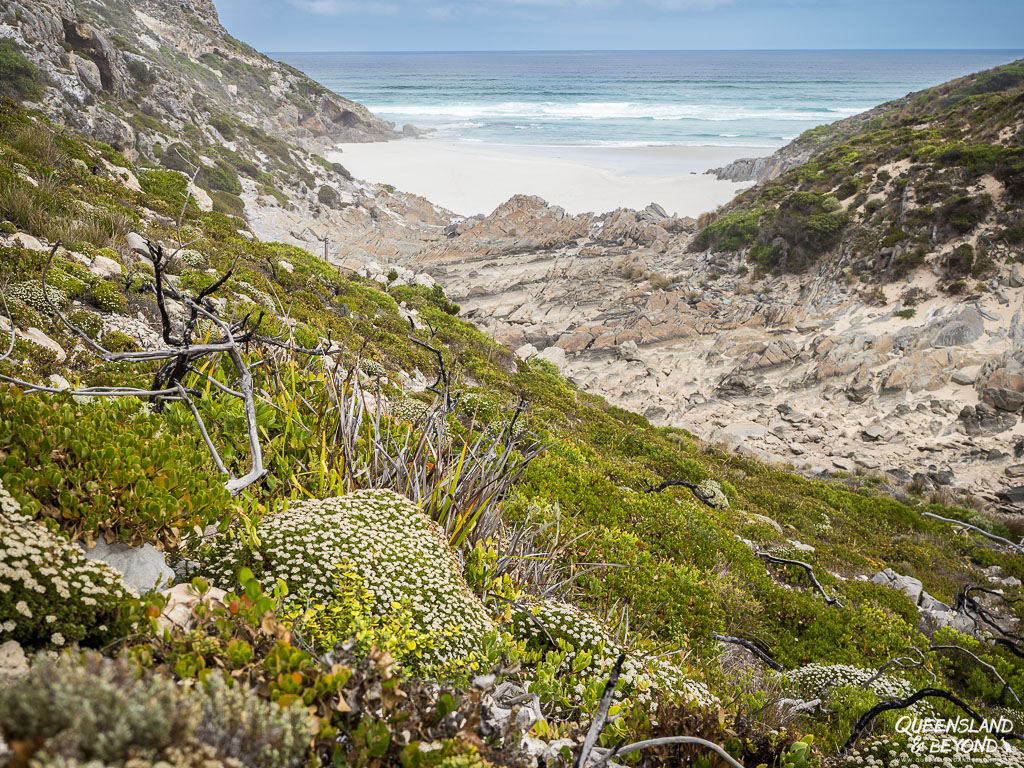
Fortunately for me, no snakes were actually sighted.
DAY 2: MAUPERTUIS SECTION | 14.1KM (NO SIDE TRIPS)
Day 2 is the longest day on the hike, both in terms of distance and hours. It’s a very sand-heavy walking day, taking you from Cup Gum Campground to Banksia Campground, which is close to Cape de Couedic where you find Admiral’s Arch.
For us, Day 2 was weird-weather-day.
It started overcast, moved on to clear blue sky, then storm clouds, began raining two minutes later, choked us with wind gusts, and became sunny again. And repeat. Ad nauseam.
Rain jacket on, rain jacket off, rain jacket on, … Yeah, like that, all day.
But apart from that, Day 2 was actually a pretty nice day.
We left just after sunrise (7:30am) and climbed the only hill there is on the Kangaroo Island Wilderness Trail, a whopping 150m in elevation just past Snake Lagoon.

Once on top of the cliffs, it’s a steady downhill trek to the next campground. This might sound easy enough but exposure, rock and sand make this leg a whole lot harder than it otherwise would be.
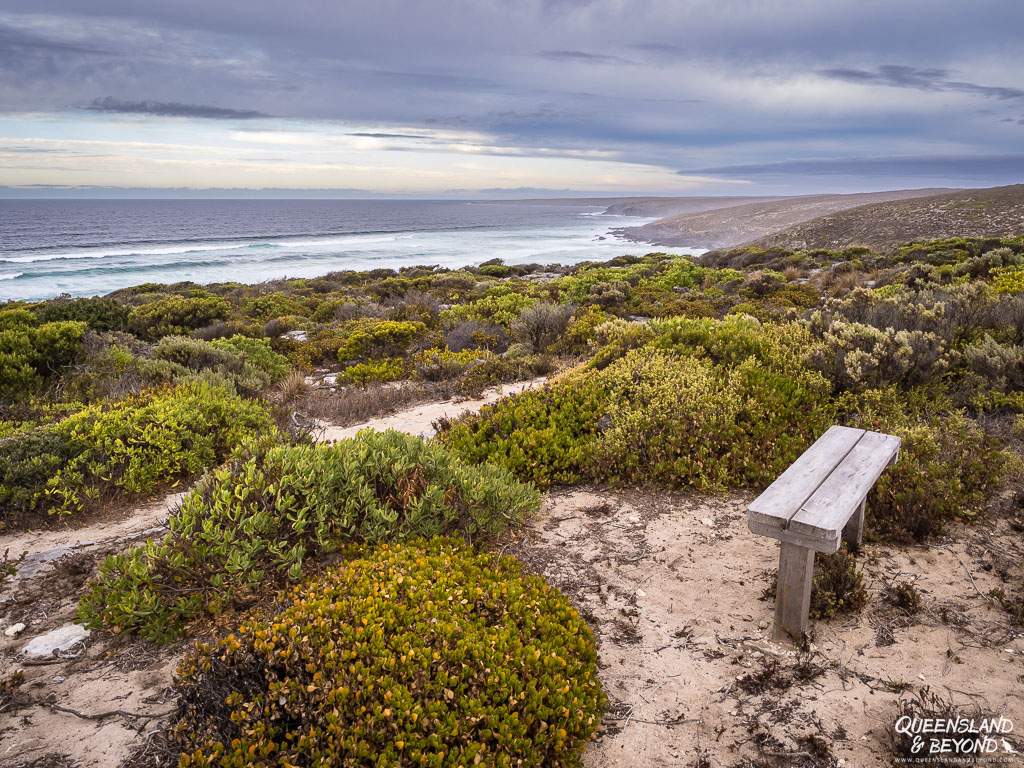
After about 3km, you hit Maupertuis Beach and then have to make the choice between the low-tide (beach) or the high-tide track (dunes). Both involve sand walking but the beach is the ‘easier’ option.
Low tide was around 9:30am for us and we hit the beach entrance at 8:45am – perfect timing.
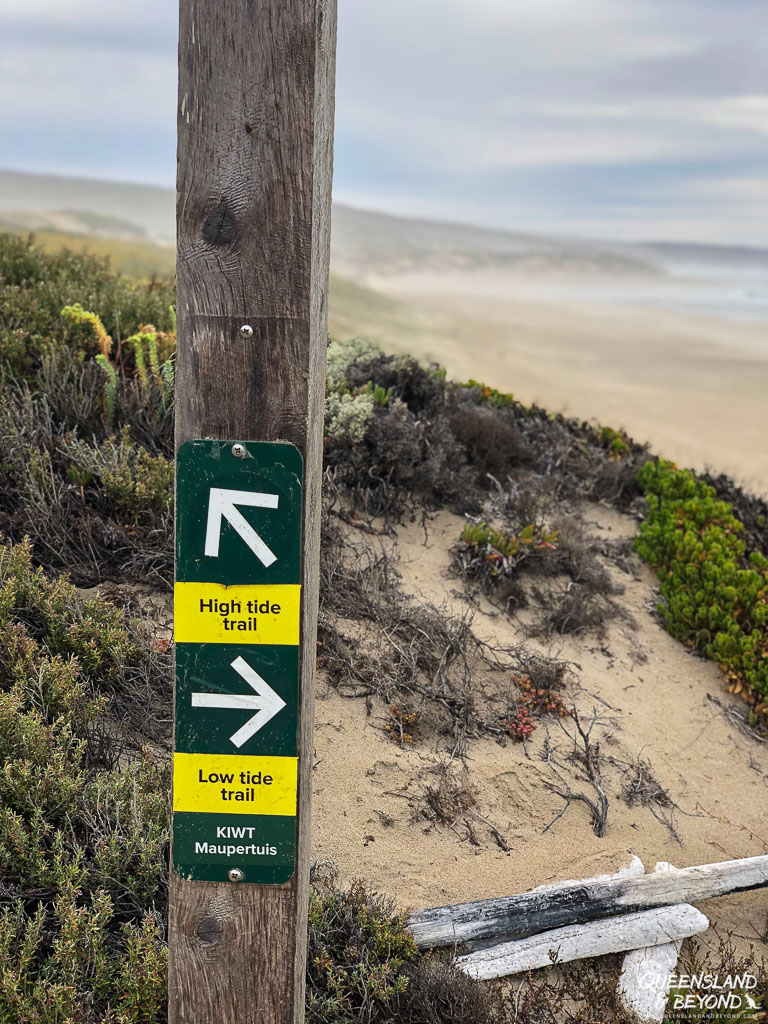
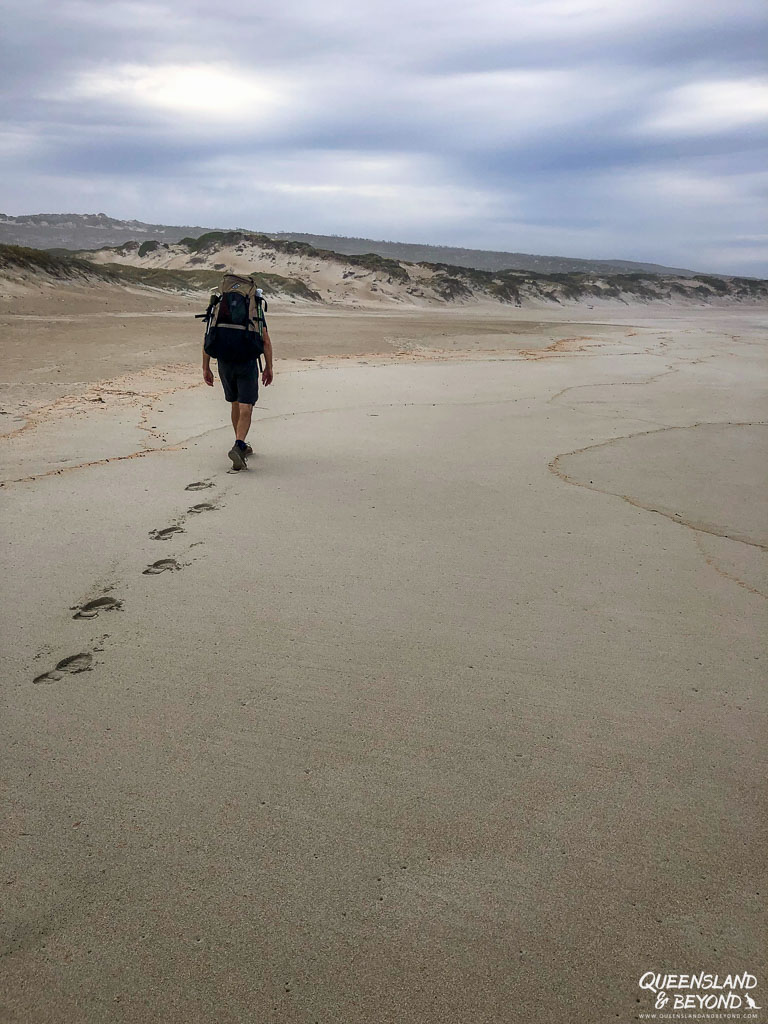
We kept trying to find the hardest bits of sand, which were about a third up the beach and not as close to the water as expected. I wouldn’t want to do this on a hot day when the sand is all warmed up and even fluffier.
I was worried that we might miss the exit from the beach but you get to the end and you can’t go any further. There are some wooden rungs placed to help you climb back into the dunes.
It’s about a one-kilometre stretch of beach walking and even in the early morning, the sand was so incredibly soft that we felt like we were moving at turtle speed.

From there the trail switches back and forth between sand and rock, and can be much harder on your feet and ankles than you might think. We also ‘lost’ the trail a few times as there are few markers and the rocks all look the same.


Coastal vegetation tends to be fragile and the soft regrowth is still in its infancy so we didn’t want to needlessly disturb the vegetation by not sticking to the trail. But it seemed a bit impossible given the lack of markers in some rocky sections.
That aside, the sprawling views along the coastline are fantastic, the coastal ‘botanic gardens’ are stunning, and the wind-whipped waves constantly give you something to look at.


Just before getting to Hakea Campsite, I came across a tiger snake on the track. Happily, she was keen to disappear quickly, and remained the only snake sighting for us.
HAKEA CAMPGROUND
While the campsites at Cup Gum Campground are really squished together, at Hakea they are nicely spaced out.
Weirdly enough, tent platforms have only been built in the tour group section, the individual hikers’ section only offers the awful tent pads.
I thought the walk from our campsite to the kitchen shelter was far at Cup Gum. But at Hakea it seemed even further. Which is kind of good if there are some noisy people hanging out at the shelter and you want peace and quiet in your campsite, you probably won’t hear them.
I quite liked Hakea Campground. It seemed nice and open, but I can also imagine it might be fairly hot on a warm summer day given the lack of trees.
SIDE TRIP: CAPE DE COUEDIC (ADMIRALS ARCH) | ~4-5KM RETURN
We didn’t do this but you could hike to Cape de Couedic or Weir’s Cove in the afternoon.
At the moment, there’s no actual trail so you’d be walking on the road. It’s probably around 4-5km return, and after a tiring day it didn’t seem like the most exciting thing to do. The walking track to Cape de Couedic is being rebuilt though and then it’ll be a much nicer experience.
If you have your own transport, you can also easily visit these sights by car, either before or after your hike (which is what we did). It can be tourist central though.

DAY 3: SANDERSON SECTION | 13KM (WITH SIDE TRIPS: ~15KM)
We got off before sunrise again so we could get to Remarkable Rocks reasonably early.
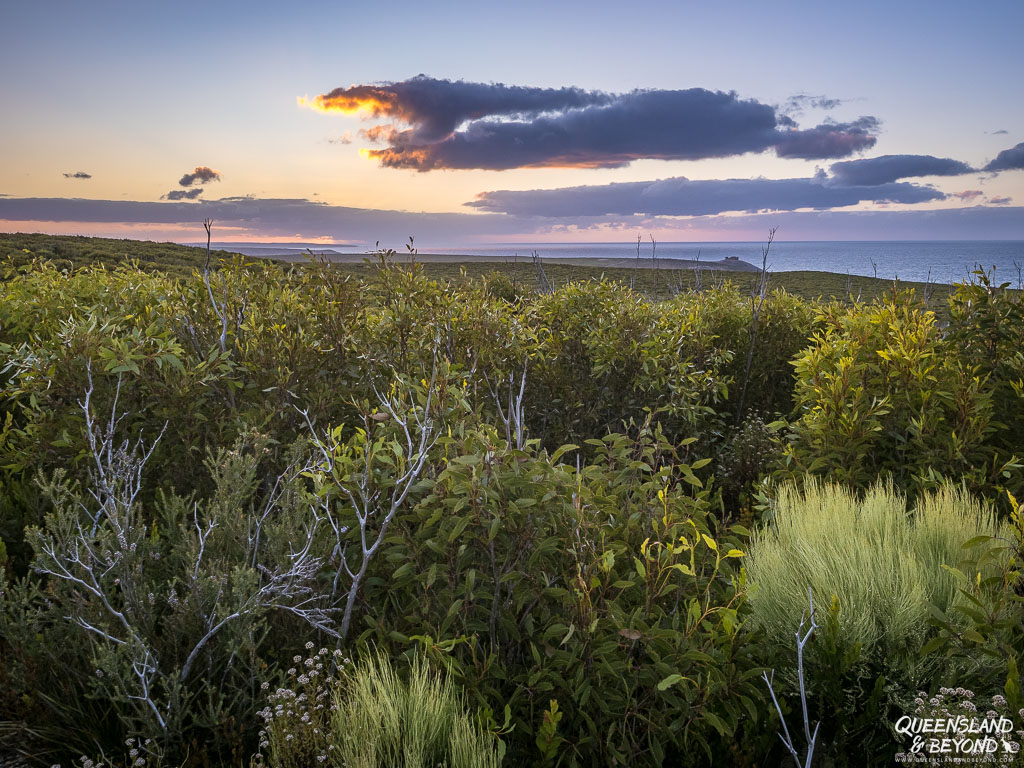
The first half of Day 3, however, is rather boring.
Leaving Banksia Campground, you traipse through the Yacca Flats but without being able to see any good strands of yaccas. The regrowth has been so prolific that you’re hemmed in on all sides.
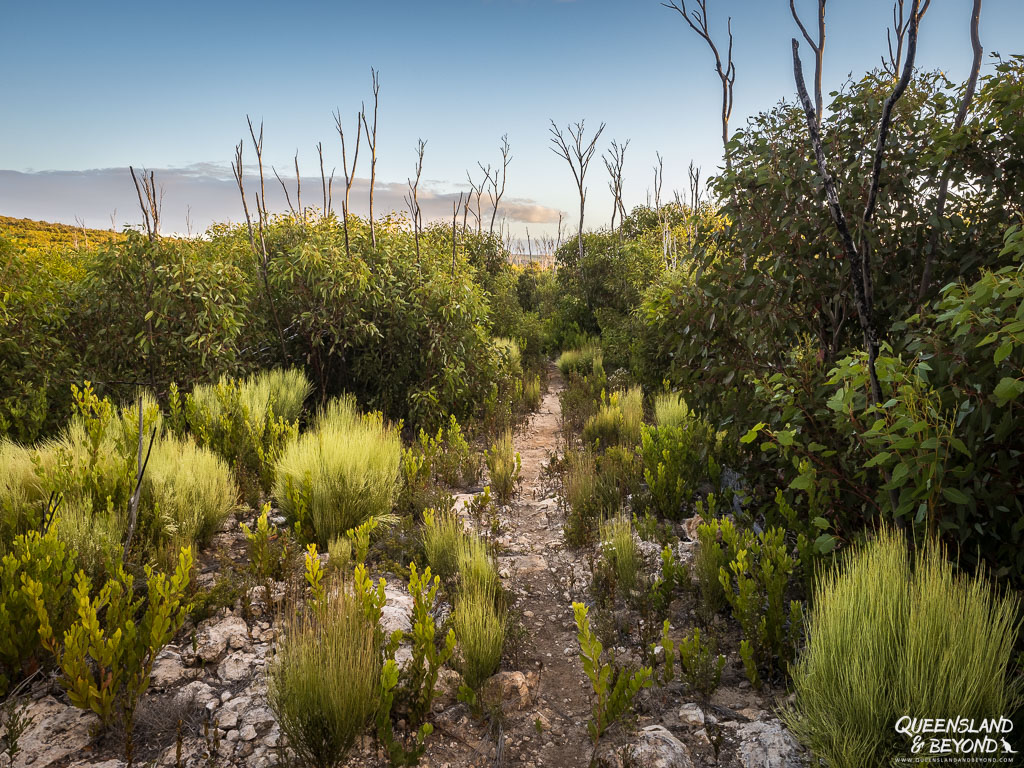
Because there’s so little to see, the hiking tends to be fairly fast and you’ll be at the turnoff to Remarkable Rocks in no time. It took us less than 1.5 hours for that first 7km section to the turnoff.
From there it’s only about a kilometre to the actual rocks (including the boardwalk section). Unless you’ve seen Remarkable Rocks before, it’s definitely worth the tiny detour. We dumped our packs in some undergrowth before turning off the main trail, and got to the start of the boardwalk section in about five minutes.
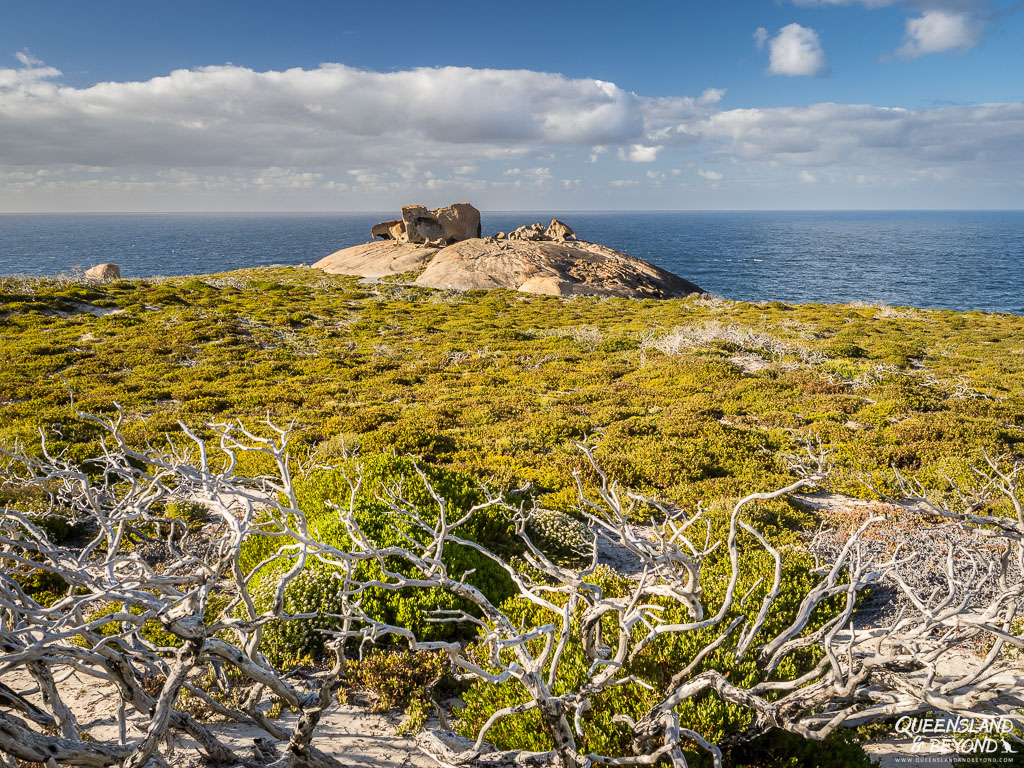
Though I was initially a bit underwhelmed, we then proceeded to spend a good hour at the rocks, crawling around them from all angles. Luckily for us, we had them completely to ourselves until just before 10am when we were ready to leave anyway.
Back on the trail, it was another 7km to the campsite for the night. Fortunately we were now on top of the cliffs again and could entertain ourselves with spotting seal pups frolicking in the waters below.
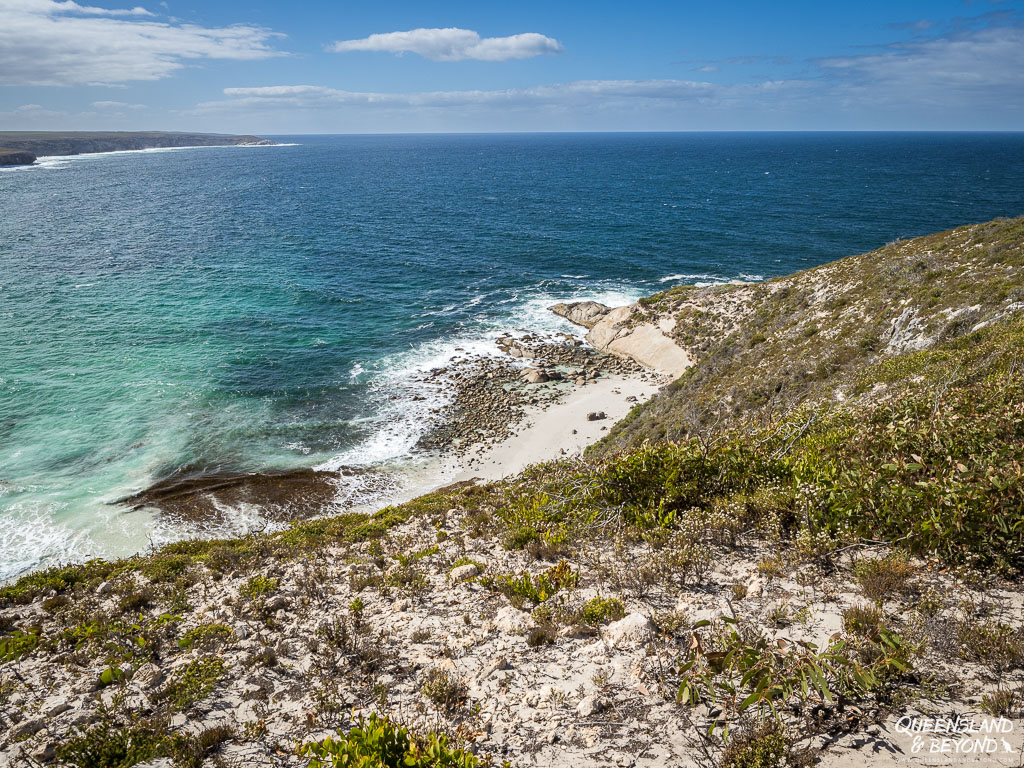
Just before you reach Banksia Campground for the night, you can take a side trip to Sanderson Bay Beach.
It’s only about 1km return but we headed to camp first where we had lunch, set up the tent and sorted out our stuff. Later in the afternoon, we went back to the turnoff, which was only about 1km back from the campground anyway.
BANKSIA CAMPGROUND
If the campsites at Hakea are spread out, Banksia Campground offers even more space.
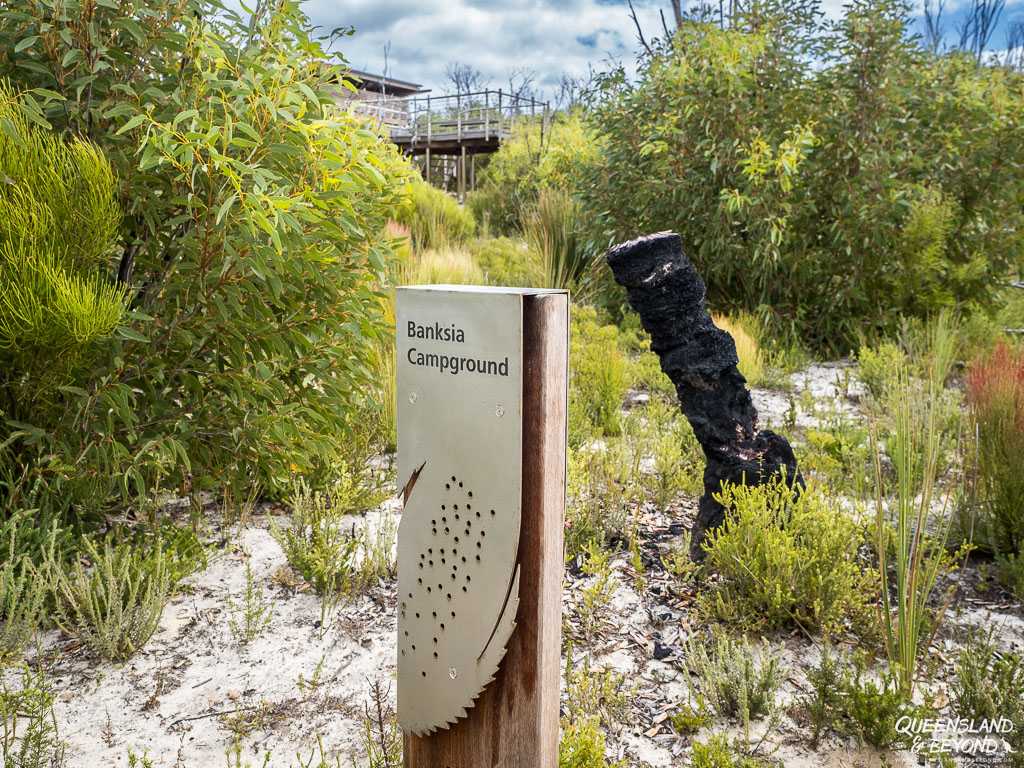
Randomly, the number of tent platforms decreases with each campground so there are only 4 or 5 platforms at Banksia. Half of these are in the tour group section.
The rest of the facilities are pretty much identical, except for the odd viewing platform right next to the kitchen shelter.

It seemed so random yet I loved sitting up there and enjoying the view over the grassland vegetation. There isn’t really a view of anything other than sprawling greenery but you do get 360° views of it!

SIDE TRIPS: REMARKABLE ROCKS & SANDERSON BAY BEACH | ~1KM + 1KM RETURN
Of the two side trips for the day, Remarkable Rocks is a must-do while Sanderson Bay Beach definitely isn’t.
Both are short side trips but Remarkable Rocks will consume much more of your time than the beach will.

Sanderson Bay Beach isn’t the prettiest beach on the island. There’s a lot of flotsam and jetsam that gets washed up here and it’s just a really wild beach without having the natural beauty of Snake Lagoon.
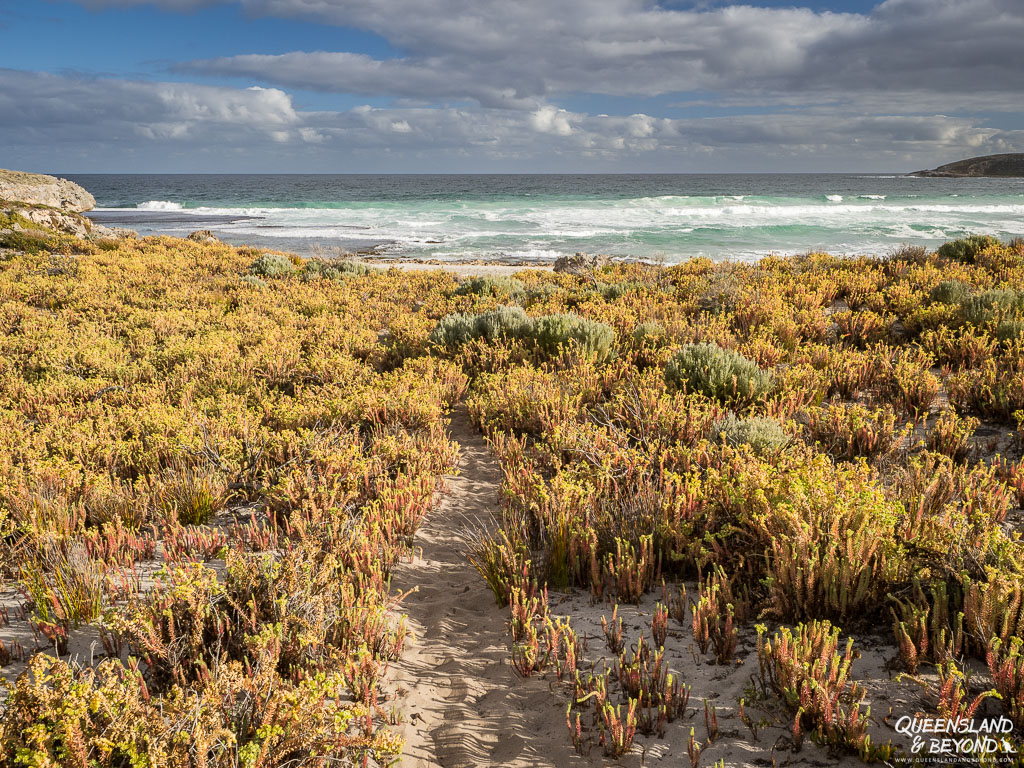
But there are some very cool tidal pools (sharp edges!) that we spent some time exploring.

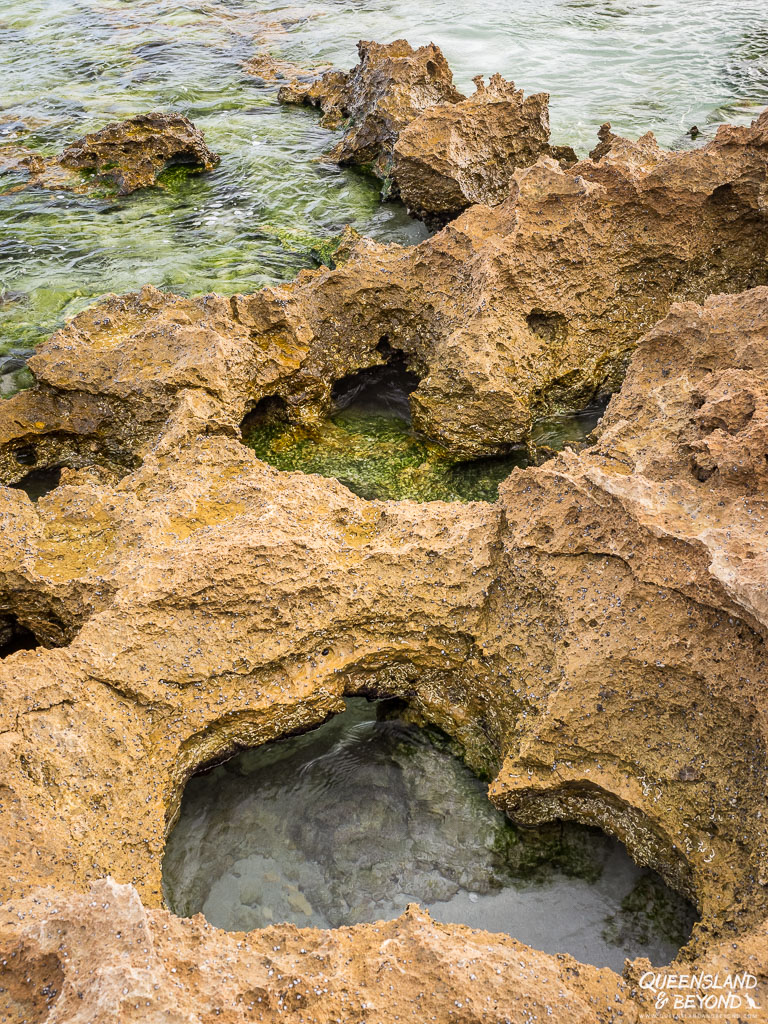
Remarkable Rocks are one of the main sights Kangaroo Island is famous for, and while I was initially a bit disappointed, they grew on me. I think I just expected them to be more magnificent.
The way these rocks are balanced on their granite base is pretty cool. Don’t miss them.
DAY 4: GRASSDALE SECTION | 13.3KM (WITH SIDE TRIPS: ~17.3KM)
You start moving away from the coastline on Day 4 as you head from Banksia Campground to your last site, Tea Tree Campground.
Despite the cold morning (about 8-9°C), we headed off before sunrise. Given the blue sky, I enjoyed the cliffs being basked in golden hues from the early morning light. Honestly, it’s my favourite time of the day, everything still seems fresh, clean and full of God’s grace.

We continued traipsing above the cliffs and it didn’t seem to take much time at all to hit Cape Younghusband (no, none was available).
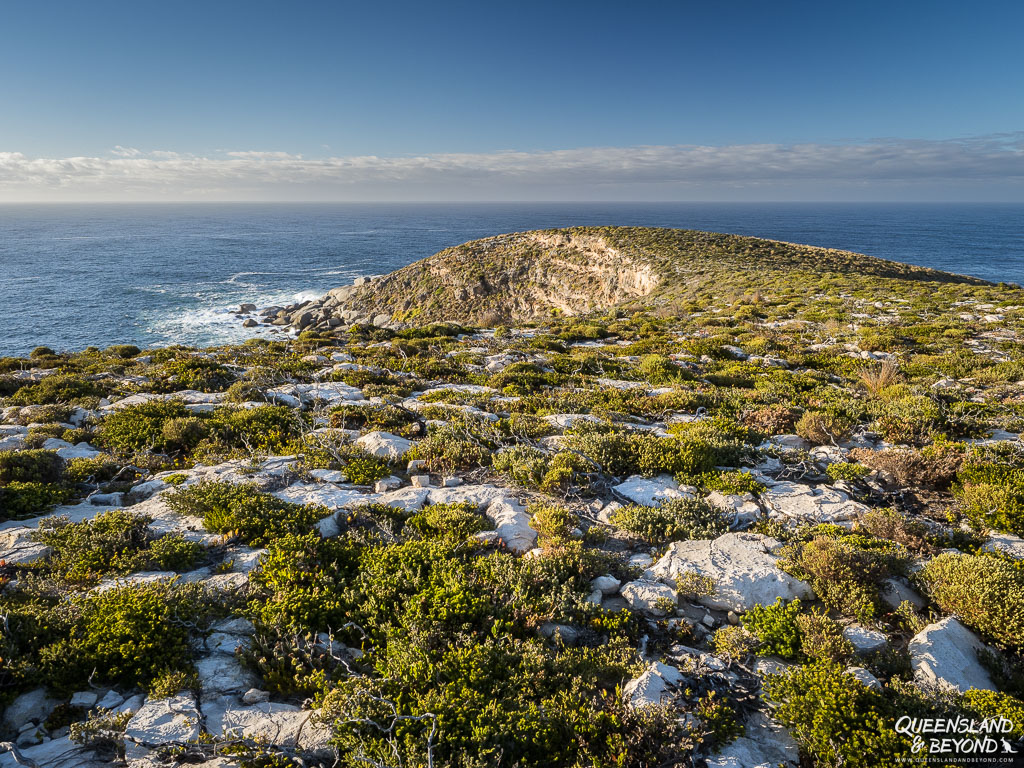
From there it’s off into the shrubs again but not before winding around some coves and getting to watch more seal pups enjoying themselves in the waves. Seal pups are just hilarious.
As the trail approaches the back of the pricey Southern Ocean Lodge, you leave national park territory and hike on private land for a few kilometres.

The trail keeps going through not so interesting vegetation until you reach the turnoff to Hanson Bay Beach. Here you are met with arguably the best part of the KIWT: The punt boat ride across the South-West River.
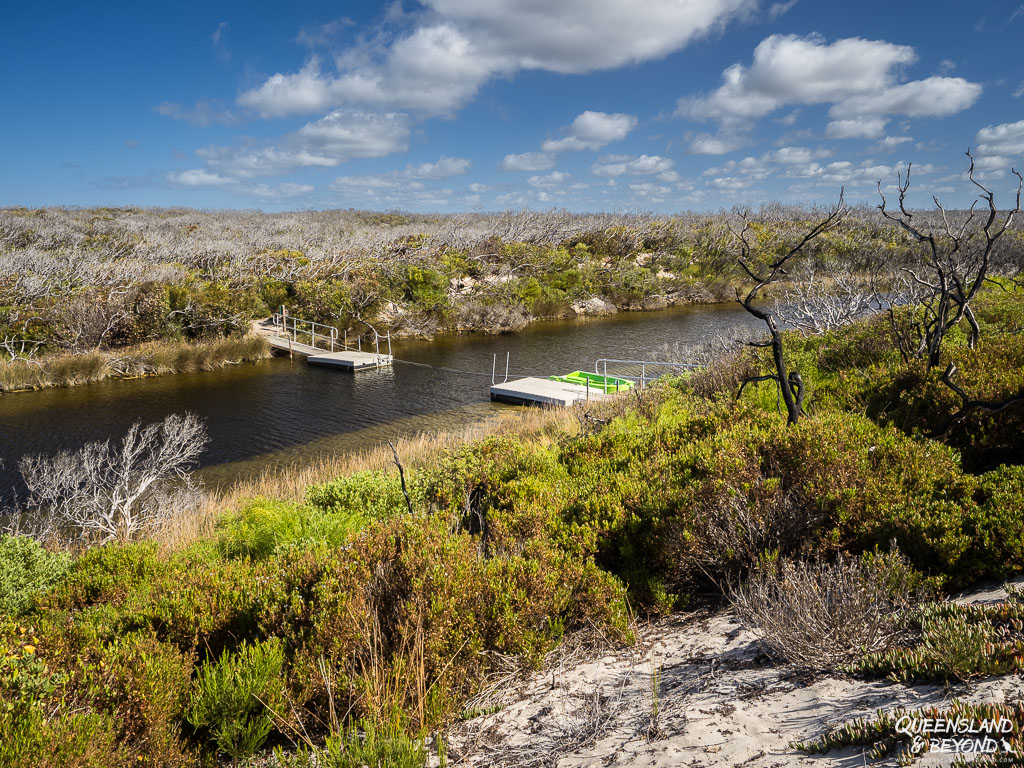
You use the rope to pull yourself across the river; or in my case, you just enjoy the ride. It is so much fun! 🙂 Every single hiker thought it was hilarious and wonderful.
Once across the river, you can either take the side trip to Hanson Bay Beach – gorgeous! – or move onto Tea Tree Campground after another three or so kilometres. I suggest you go to Hanson Bay Beach first because the last three kilometres are really boring and will feel very hot as they’re super exposed.
TEA TREE CAMPGROUND
The walk into Tea Tree Campground is much longer than at any of the other campgrounds. You arrive at the sign fairly quickly after the turnoff to the campground but then keep walking and walking and walking.
We actually backtracked a couple of times because we thought we’d missed another marker somewhere and were supposed to turn off.

Follow the track, it’s just much further from the sign to the actual campground than for any of the other campgrounds where it’s pretty much a matter of: “Sign. Voilà. Campground.” At Tea Tree, it’s: “Sign. Walk, walk, walk. Walk some more. Campground.”
Tea Tree Campground also has a bridge leading from the kitchen shelter and toilets to the campsites. Kind of cool. Just don’t fall in the river if you go to the toilet at night.
There are only four tent platforms here, two in each section.
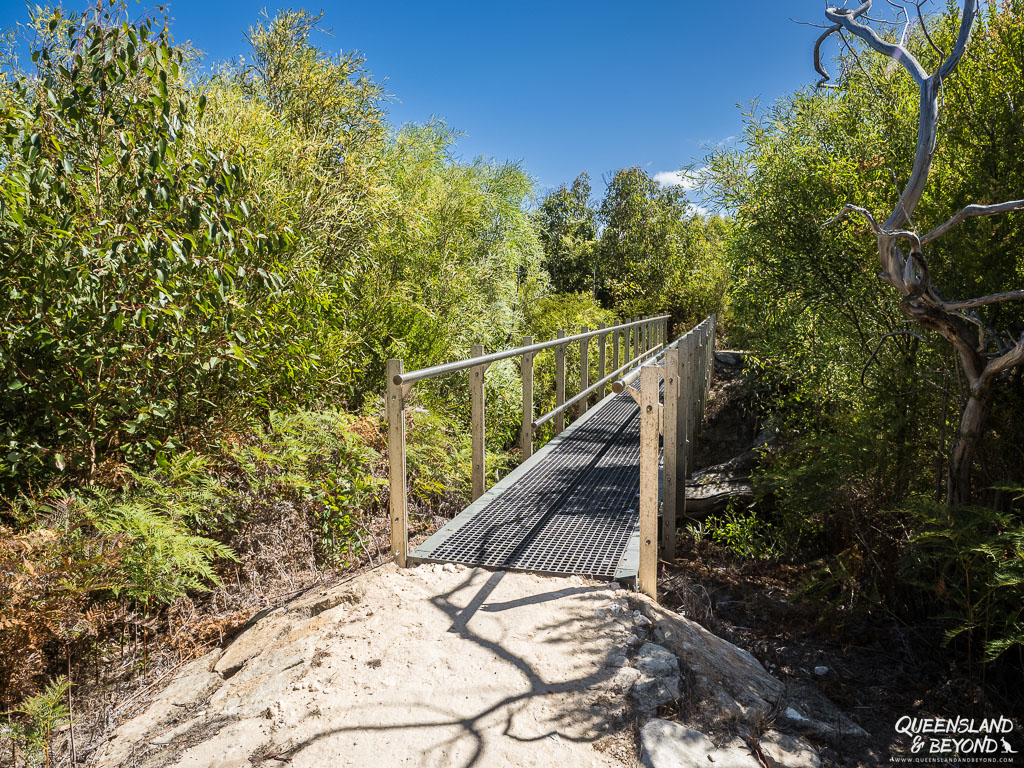

Tea Tree Campground also has a communal fire place inviting hikers to share and reflect on the trail. I haven’t quite made up my mind yet as to what I think of this. Might be quite nice for groups?

With us hiking in early autumn, there was no firewood provided and very little need for a fire anyway. Temperatures were well into the mid-20s during the day (though quite chilly at night already).
SIDE TRIPS: HANSON BAY BEACH & EDWARD’S COTTAGE | ~1.4KM + ~2.6KM RETURN
The last full day offers up two side trips and both are worth it in my opinion.
First of all, don’t miss Hanson Bay Beach. Even if you don’t want to go for a swim (I didn’t but it is a swimming beach), it is just stunning. Kangaroo Island really has some beautiful, beautiful beaches, and this is one of them.

It is a three-kilometre boring walk back to the turnoff so it’s best to do it when you initially come past. Unless it’s a really hot day and you want to hang out at the beach for the afternoon anyway.
If you’re historically inclined, go and take a peek at Edward’s Cottage, an old limestone cottage. There’s no sign to it, just follow the road out of the campground past the toilets and you’ll see it in the far distance.
It’s probably a 15-20 minute walk (= meander) each way.
There’s also a good chance you’ll come across kangaroos in the open field along the way.
DAY 5: KELLY HILL SECTION | 7.6KM (NO SIDE TRIPS)
The last day isn’t much to shout about. You basically just leave Tea Tree Campground and end up at Kelly Hill Caves in next to no time.
There are some interesting bits vegetation-wise and you can glimpse Grassdale Lagoon from above (until the regrowth puts an end to that).

Depending on the time of year you do the Kangaroo Island Wilderness Trail, you might have a fabulous time observing birds at the lagoon. We didn’t have much luck beyond a couple of black swans.
Some other hikers watched parrots for a while and that would have been fun but we weren’t so lucky.
We weren’t in a hurry to leave and probably left camp around 7:45am (for once, we weren’t the first to leave). We initially walked relatively fast since it was an icy morning (3°C at 6am) but then we totally meandered along and reached the end around 10am.
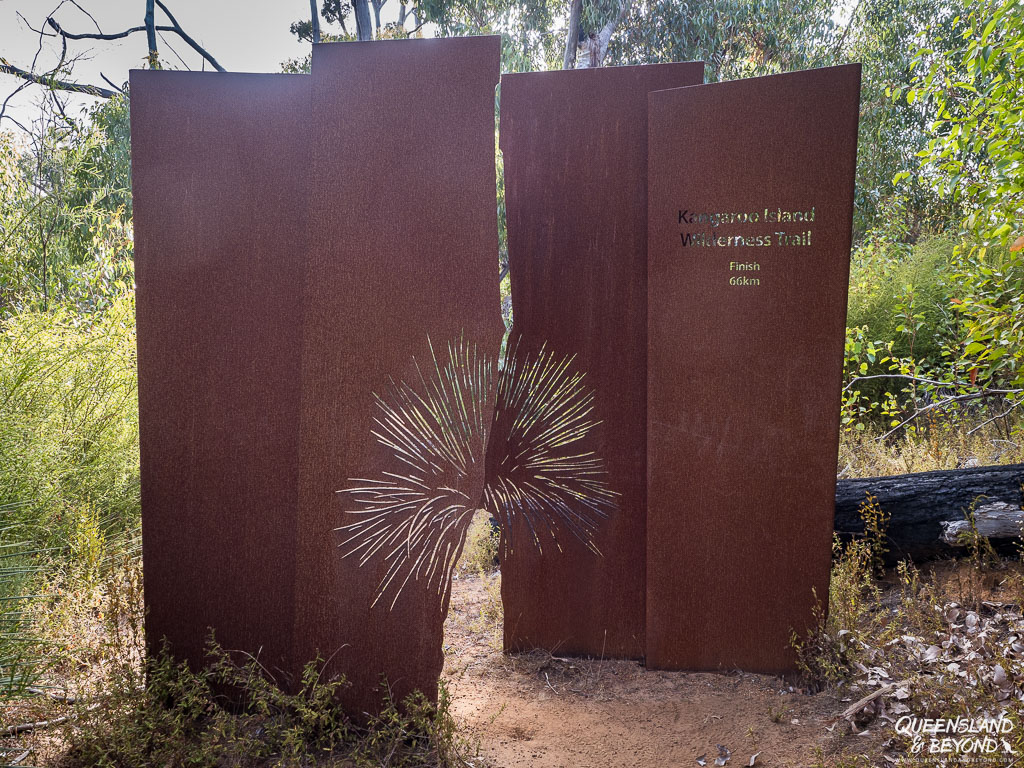
Arriving so early meant we had plenty of time for a cup of tea and a snack before our transfer at 11:30am.
Then it was off to Kelly Hill Caves for our 1pm tour, and a well-deserved coffee (ah, tea), cake, and shower (in that order) back at the caravan park.
SUMMING UP
Despite not wowing us at every corner, the Kangaroo Island Wilderness Trail is definitely worth doing. We have no regrets about our trip and would do it again (if it wasn’t so hard to get to KI). It was a really great way to see a bit of Kangaroo Island and restore some much needed balance to my mind and body.
The regrowth is amazing, and we truly loved the natural botanic gardens we felt we were walking through for much of the first two days.
Since you’re walking mostly on sand and rocks, the walking can be a bit hard on your feet and ankles. My feet definitely felt tired at the end of each day.
I didn’t get to any great photo spots for sunrise or sunset but that wasn’t my goal on this hike anyway. I wish I’d got up a bit earlier a couple of times and actually made it onto the cliffs before sunrise but the sunrises were pretty much fizzlers so I wasn’t too upset.

The hardest part of the hike is probably getting there, the rest will feel like a piece of cake if you’re fit. Unless you’re hiking in the heat, then this could turn into a pretty tough walk.
If you haven’t done much multi-day hiking or aren’t used to camping when hiking, this trail would be a great option, especially if you’re going with more experienced hikers.
Make sure to bring some kind of footprint for your tent.
TIPS FOR HIKING THE KANGAROO ISLAND WILDERNESS TRAIL
Here are a few things to keep in mind when planning your hike:
- Open all year round, summers can get very hot in South Australia so this hike is best done in the cooler months (March to November) unless you’re used to hiking in the heat.
- National Parks & Wildlife Service SA requires you pre-book your permit and then complete an induction before setting out. This is when they provide you with a waterproof map and actually go through a few things. No permits per se are actually handed out anymore but our induction took around 20 minutes, which totally surprised us as other ‘inductions’ have usually been more of a tick-box exercise. You can also book in for your tour of Kelly Hill Caves then, which you shouldn’t miss, they’re quite cool.
- Work out your transport options: The trail is best done with your own transport. Relying on bus services to/from the trail isn’t a feasible option at this point. The SeaLink ferry to Kangaroo Island is expensive and can book out early; even with a very small car, it still cost us around $500. If you can somehow arrange a shuttle on the island, passenger-only charges for the ferry are much lower. If you rent a car on the mainland, check with the company that you’re allowed to take the rental onto the island. Most major rental companies won’t allow it and you won’t be covered if anything happens.
- National Parks SA offer a shuttle service from the end of the trail (Kelly Hill Caves) back to the start (Flinders Chase Visitor Centre) at 11:30am on your last day. It might not be clear on the booking page (it wasn’t for us) but they are very adamant it’s part of the service. Simply confirm at your induction that you need a lift back.
- Filtered water is supposed to be available at all campsites (from the tap in the kitchen shelter only) but we still filtered all water (nobody else did though).
- You’re unlikely to be able to camp on a tent platform every night so be sure to bring a footprint to protect your tent.
- Like any hiking track, the Kangaroo Island Wilderness Trail is pack in pack out – take all your rubbish out with you. We didn’t come across a single wrapper or tissue on the trail!
- There are almost no accommodation options in the western part of Kangaroo Island. The only affordable option close to the trail is the Discovery Park. You can also stay in heritage accommodation run by National Parks SA (minimum stay two nights), which is in the national park.
For more information, check National Parks & Wildlife Service SA.
Happy hiking,

MORE IDEAS FOR OVERNIGHT HIKING TRIPS IN AUSTRALIA
- For probably one of the best hiking experiences in Australia, the 230km Larapinta Trail in Central Australia can’t be beat. It’s one we want to do again.
- Some years ago now we hiked into Carnarvon Gorge in Queensland. The Carnarvon Great Walk is about 5-7 days but we only did the first night to see spectacular Carnarvon Gorge. We’re planning to do the full Carnarvon Great Walk some time this year.
- If you want a more luxury experience or haven’t done much multi-day hiking, the 4-day Three Capes Track in Tasmania is a wonderful option. Accommodation is in pretty fancy huts (unfortunately, with a pretty hefty price tag as well).
PIN FOR LATER
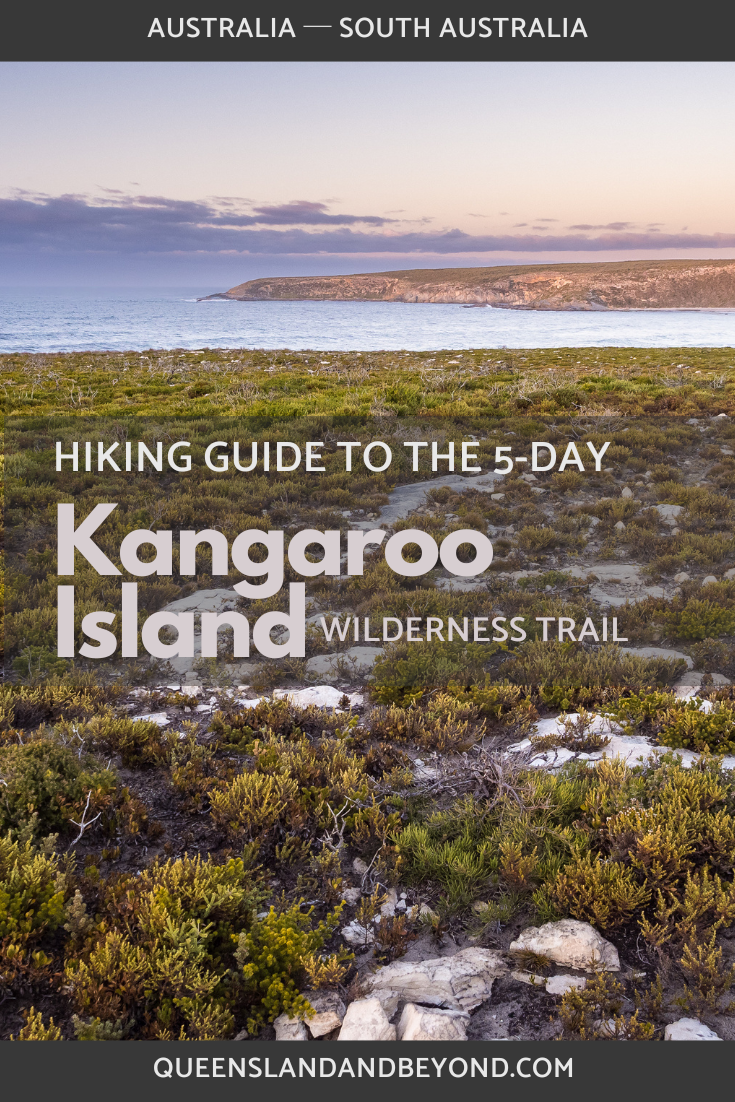
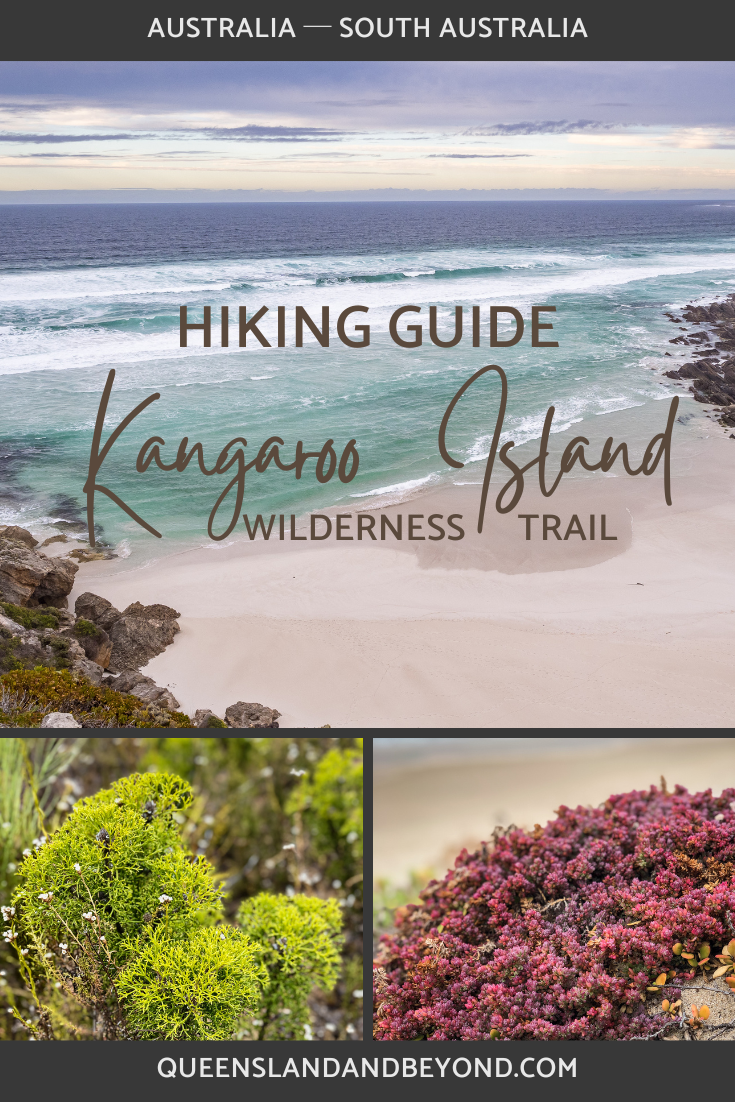


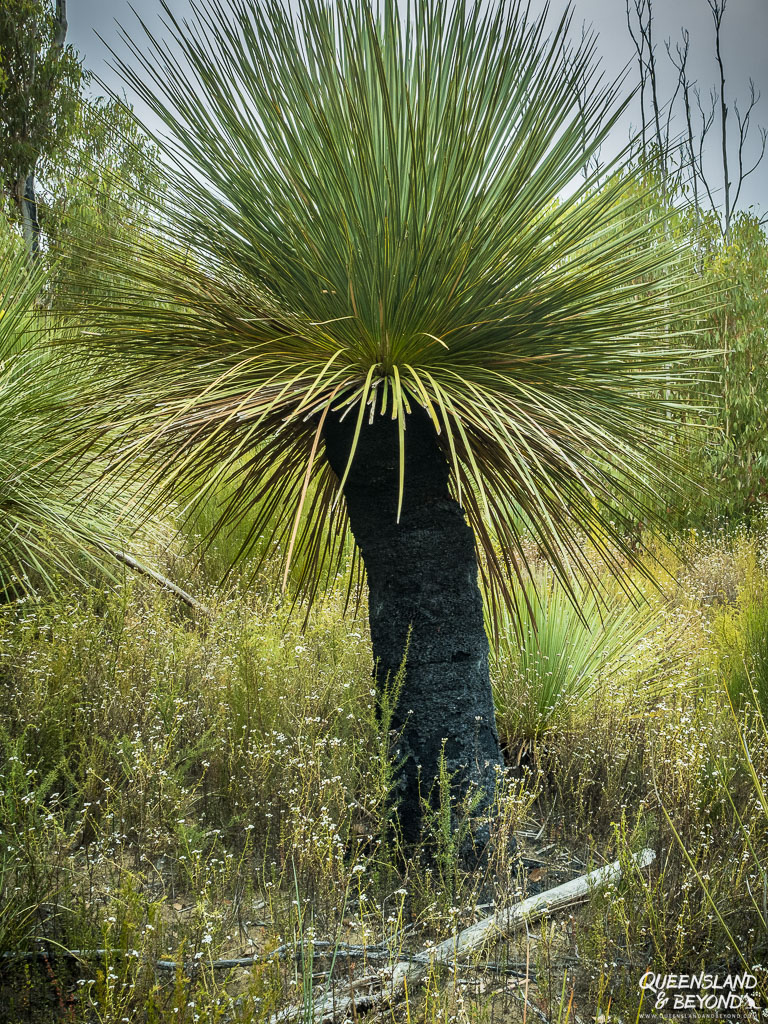
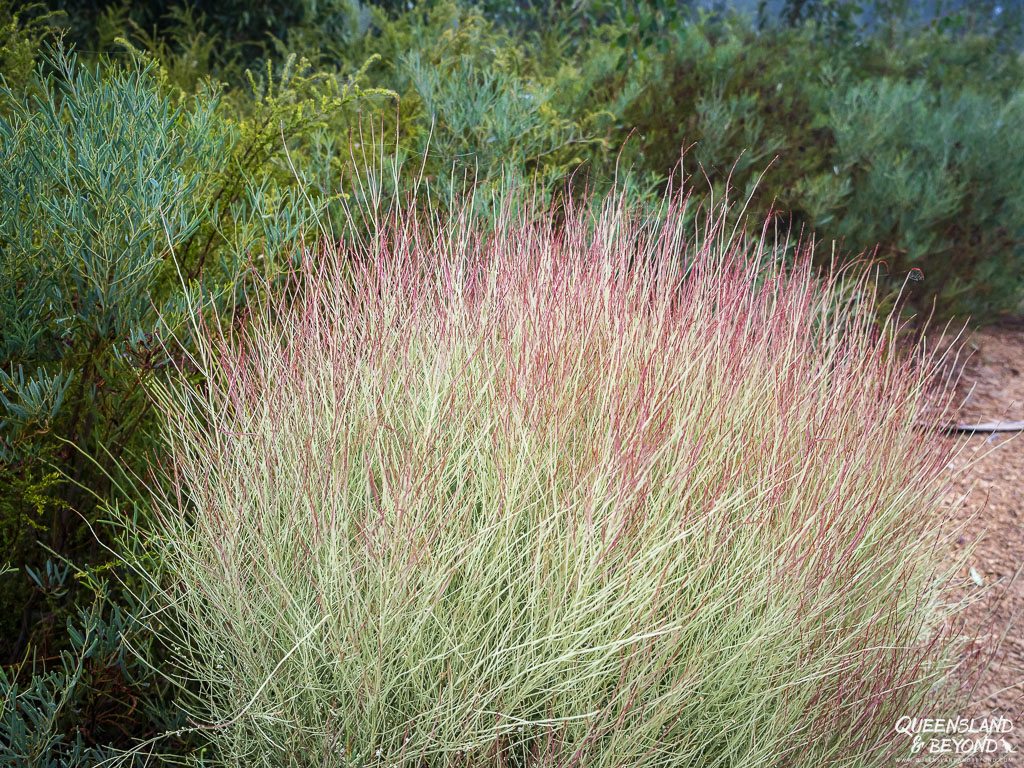
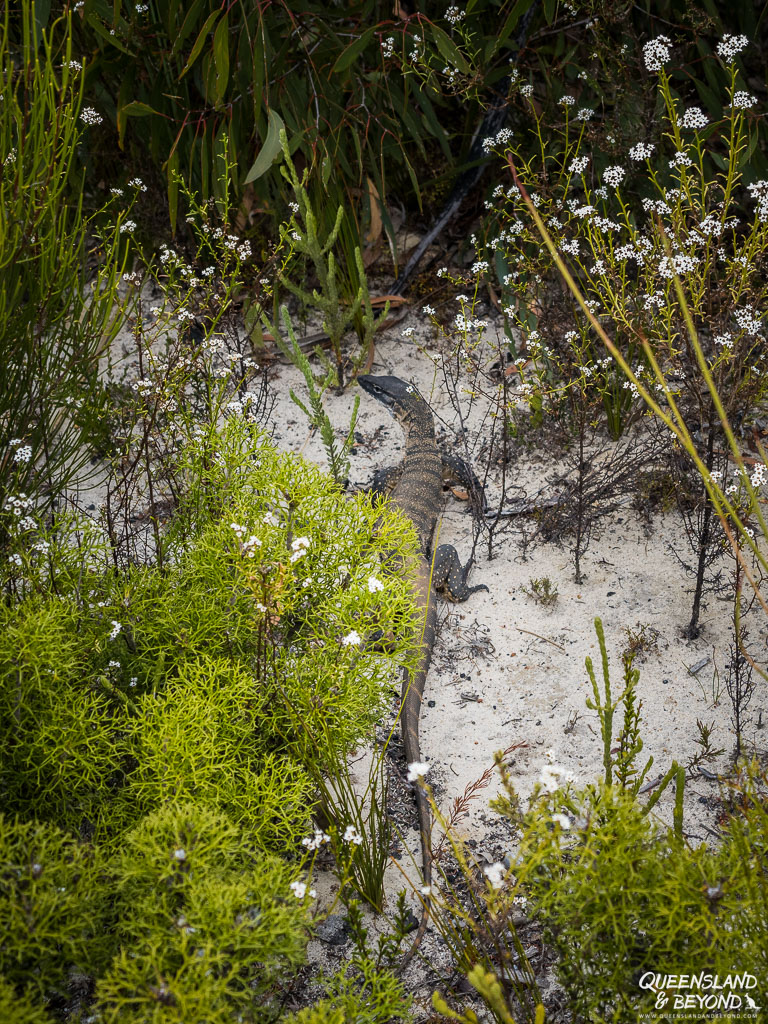
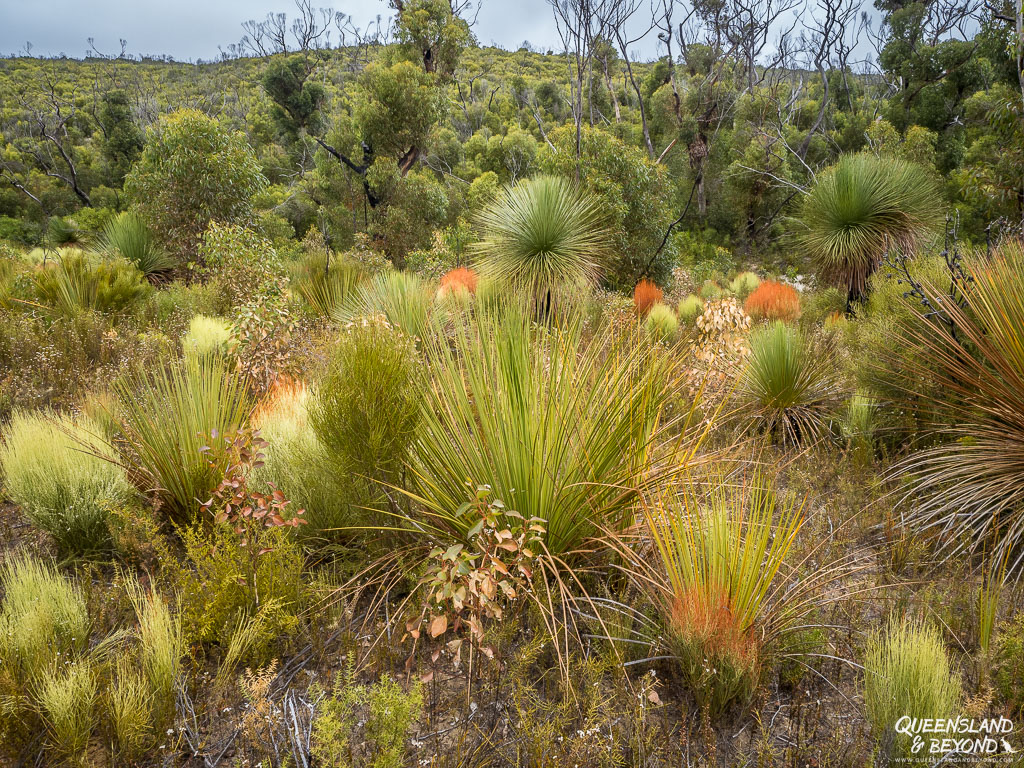
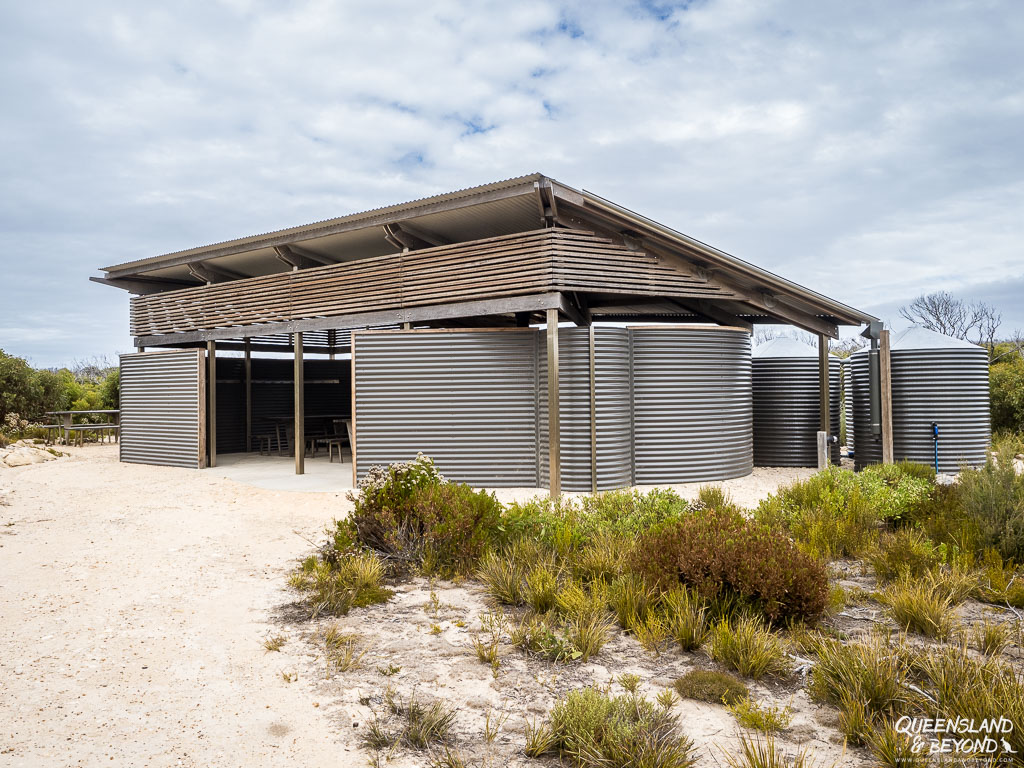
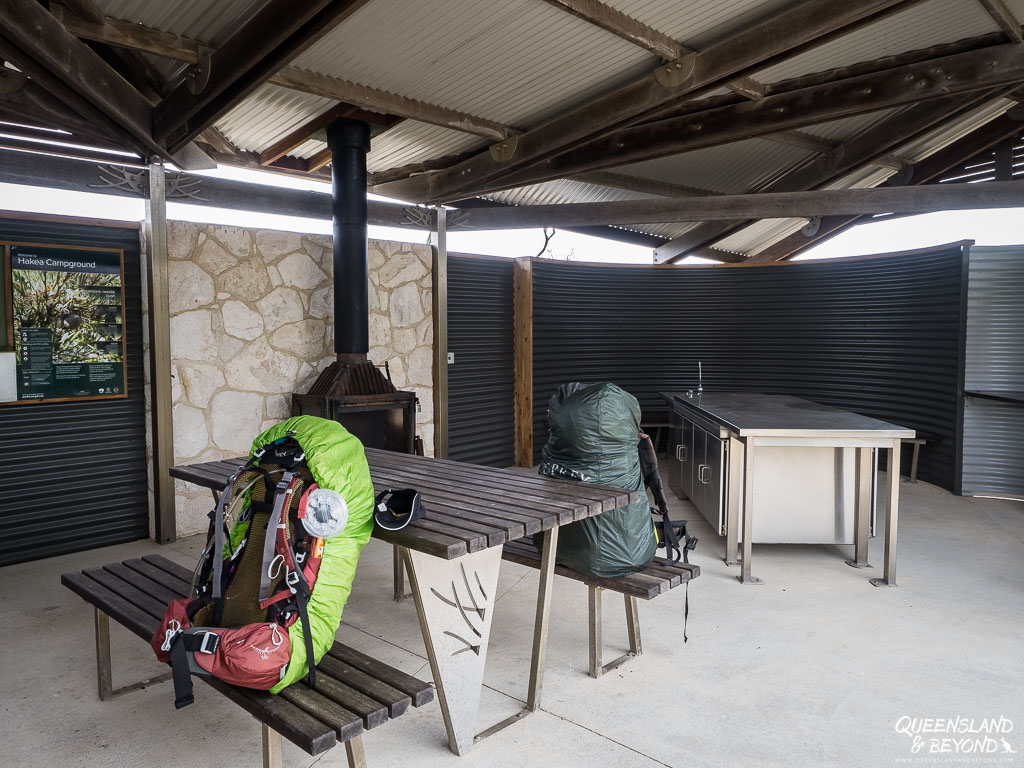
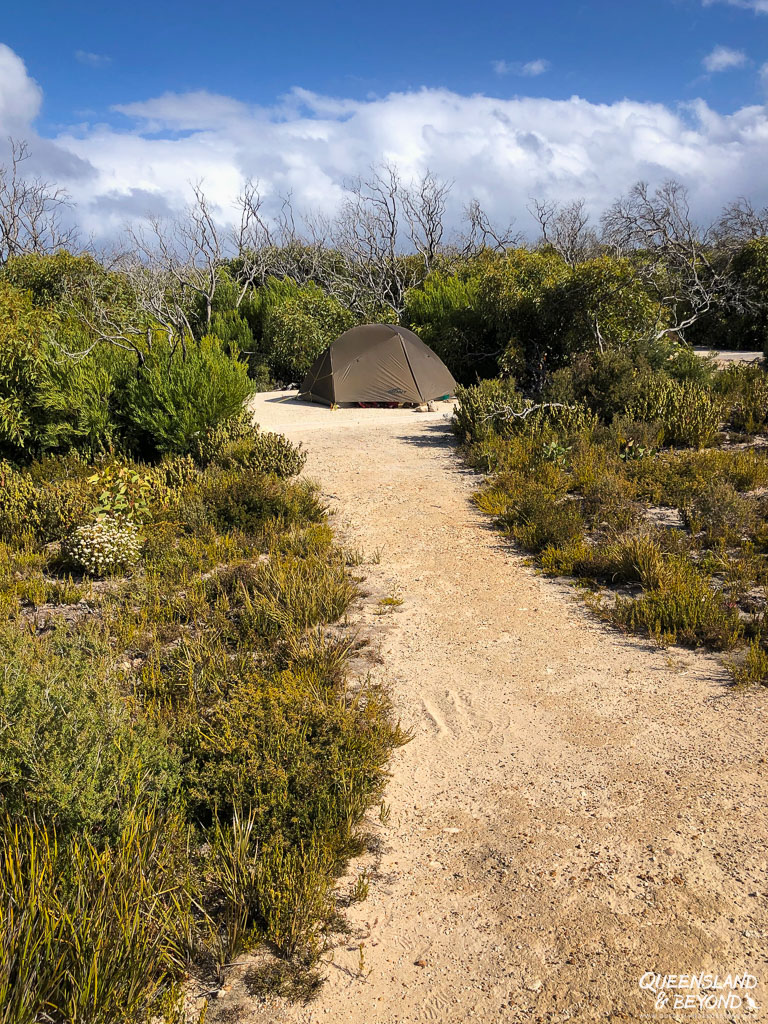
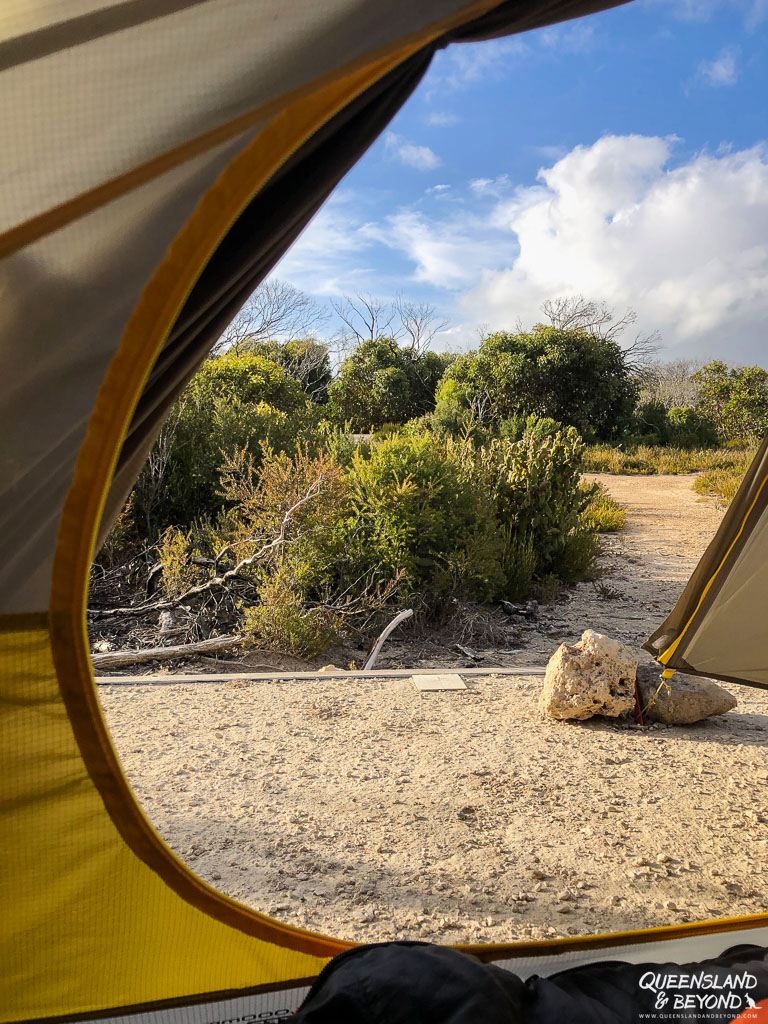
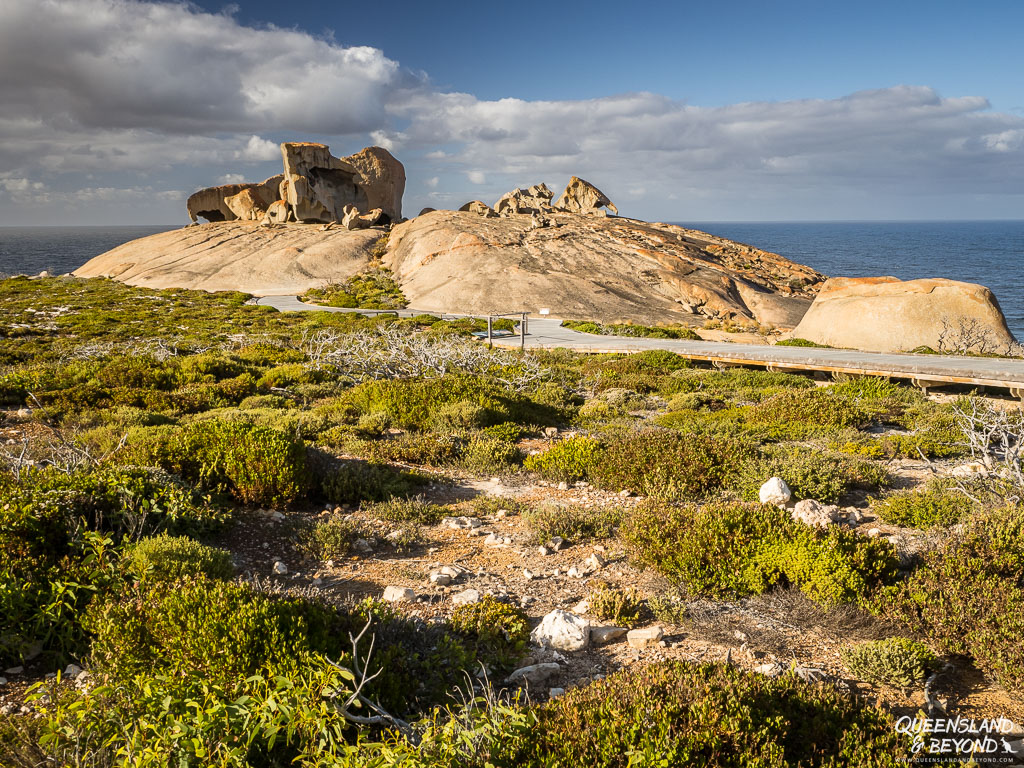

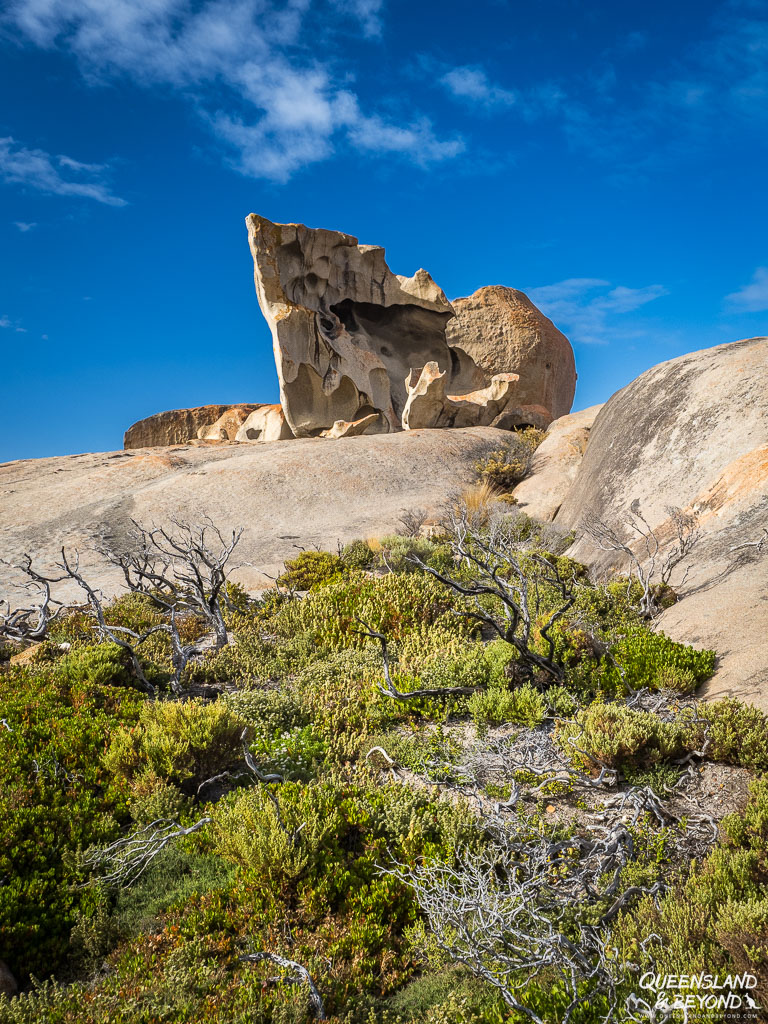
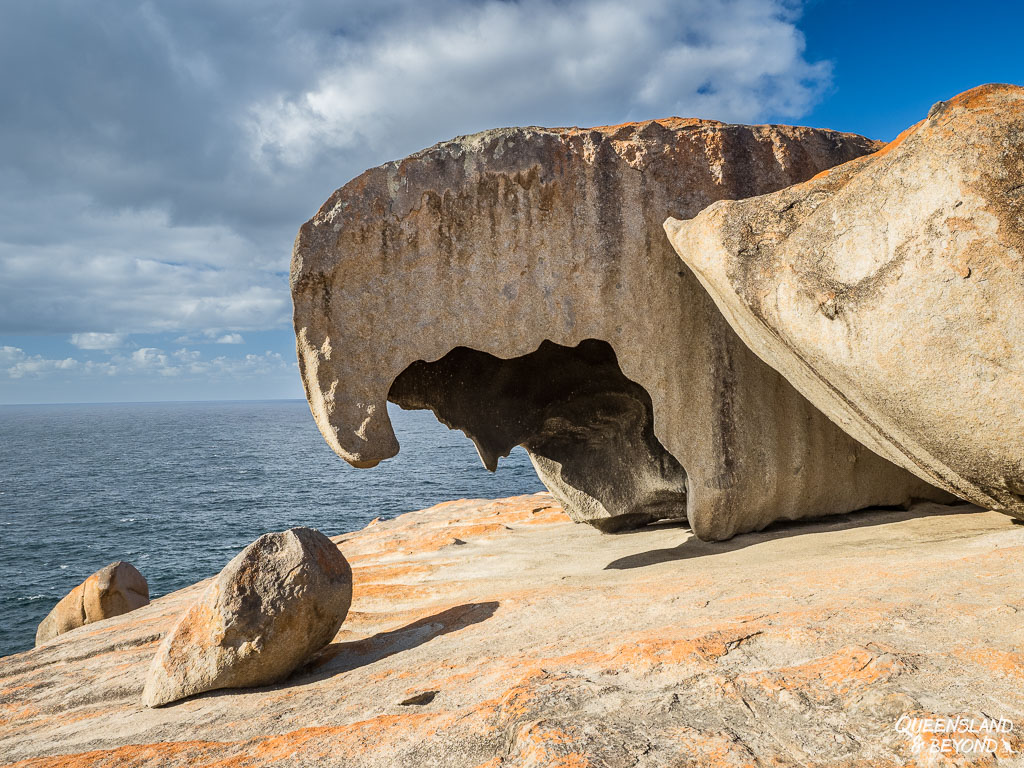
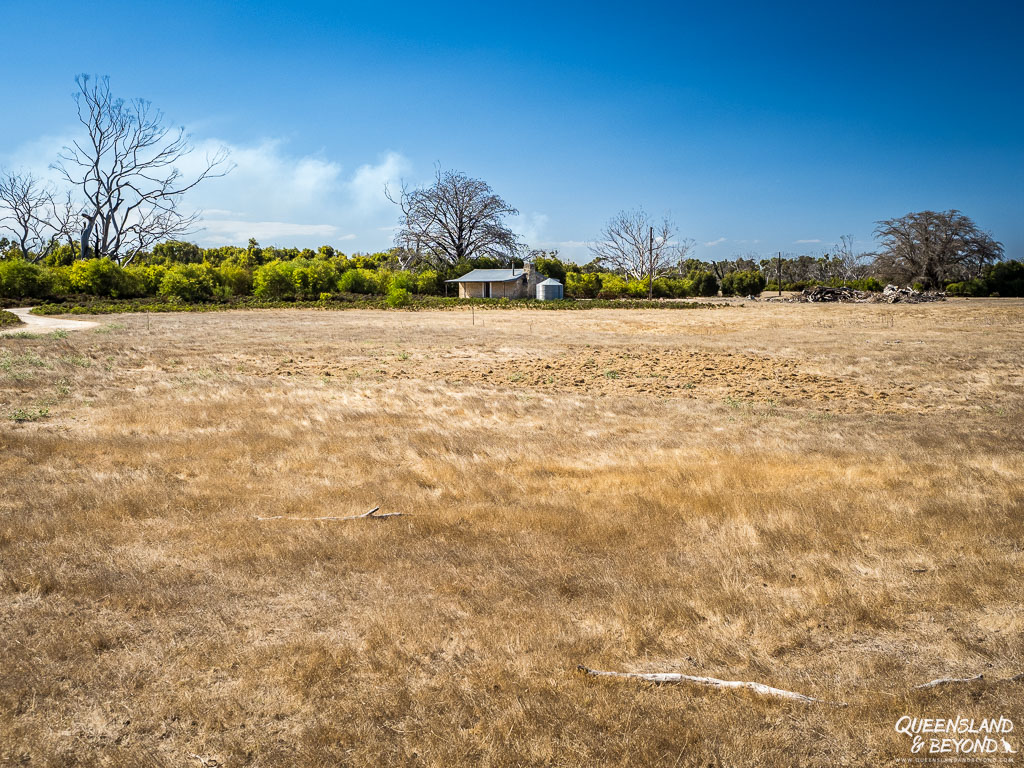
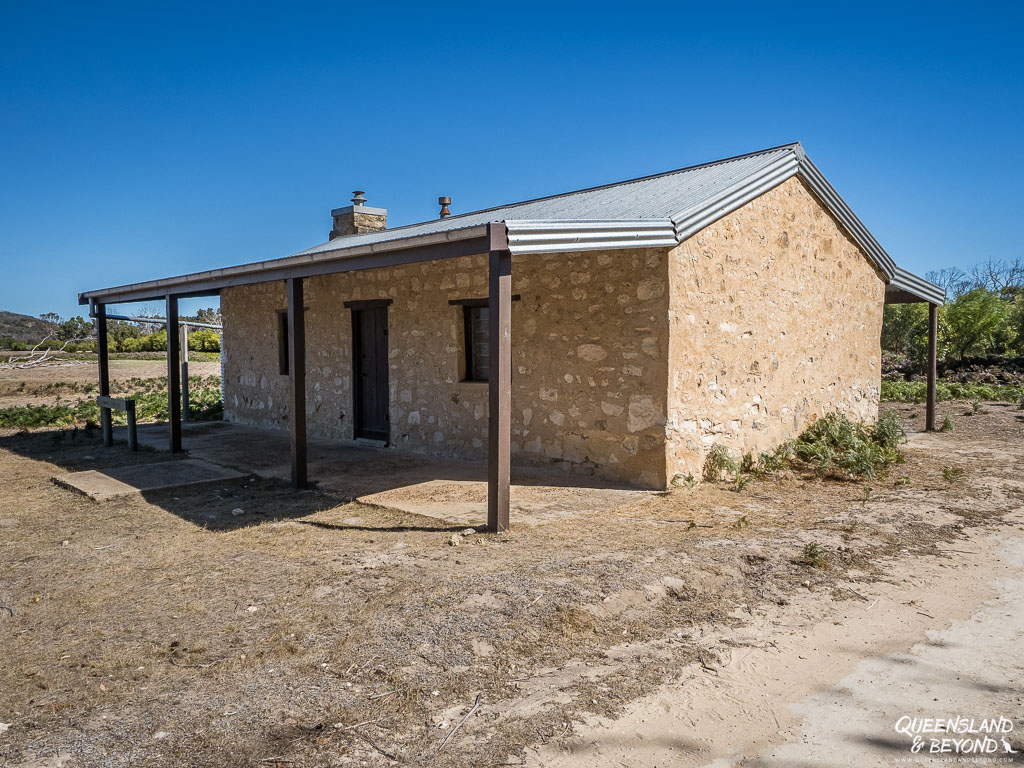
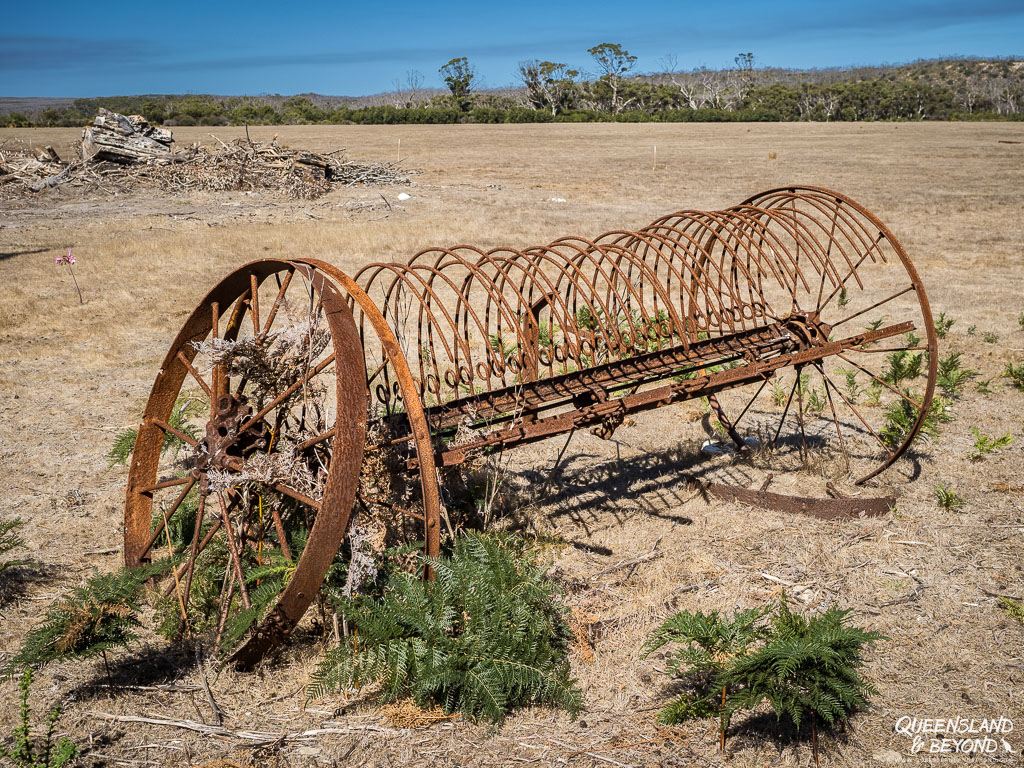
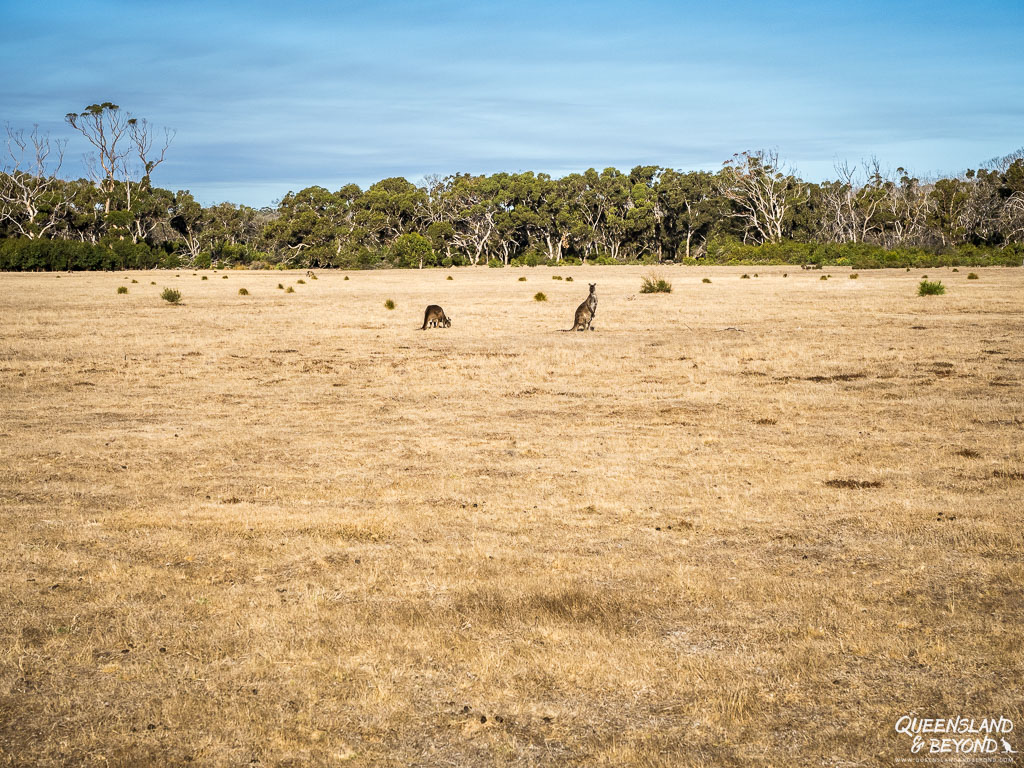



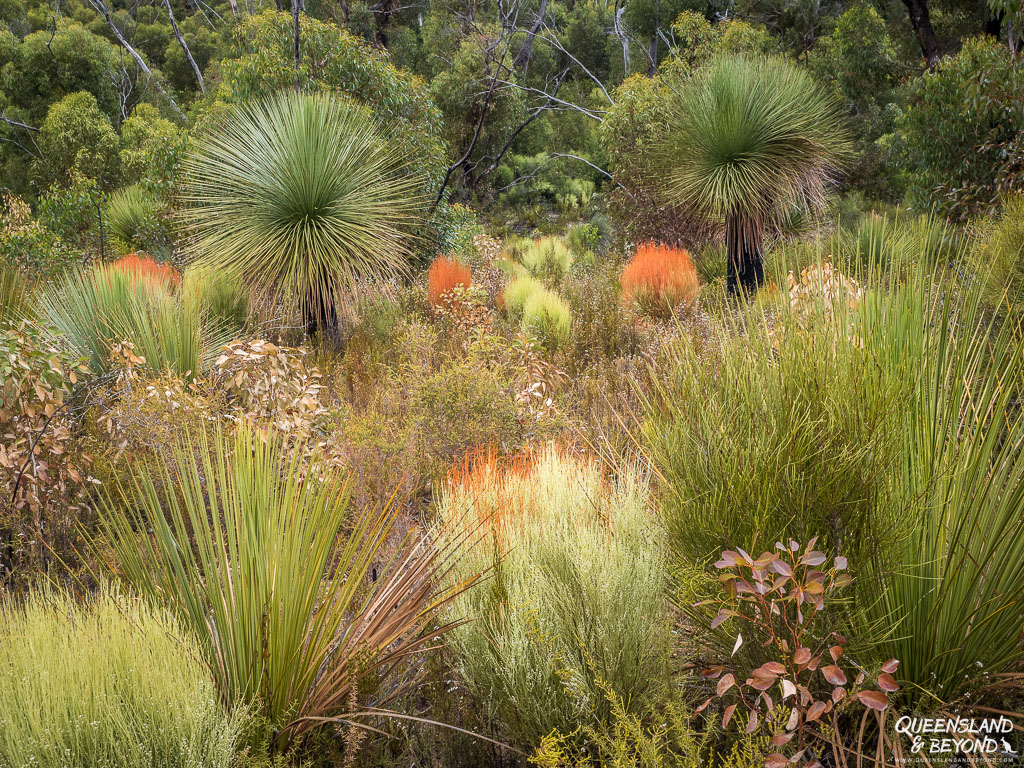


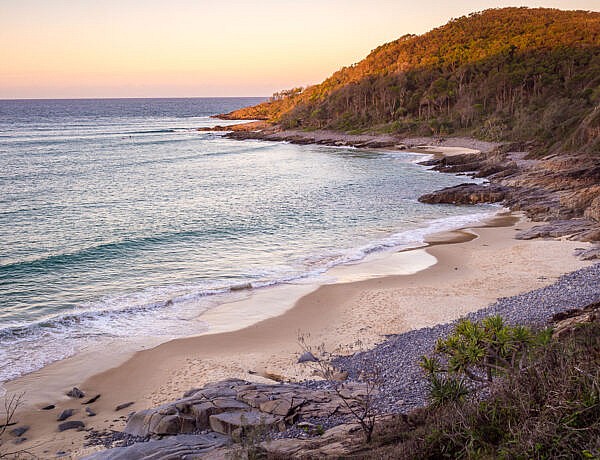

No Comments